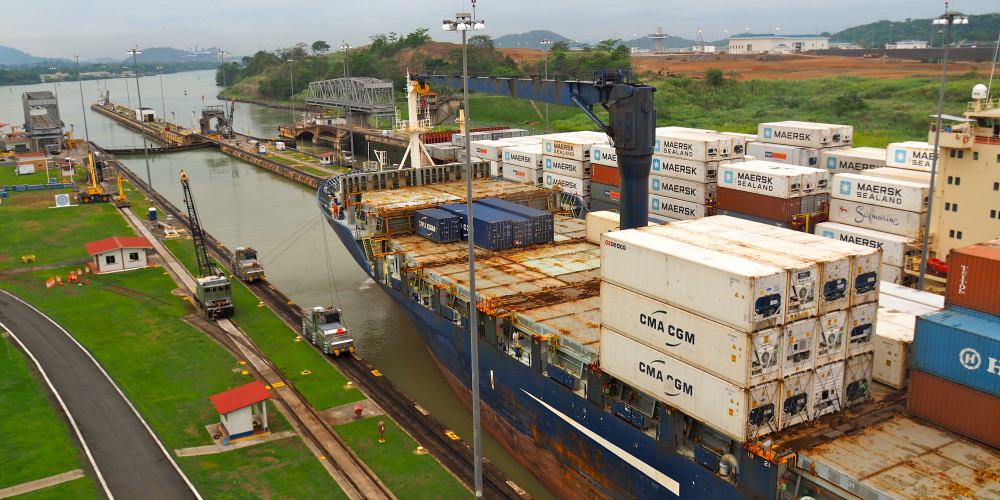Our original itinerary did not include more than a couple of hours in Panama City, however once we decided to skip Costa Rica in favour of Colombia, it made more sense to fly directly from Managua (Nicaragua) into Panama City as opposed to spending five-plus days making the overland journey.
The decision to forgo Costa Rica and its spectacular rainforests, volcanos, cloud forests, beach time and the ‘pura vida’ lifestyle was not an easy one to make. However, we had heard time after time how much more expensive Costa Rica was than the rest of Central America, with the average tour costing more than US$100 per person.
Additionally, as we travelled south from Mexico City through Central America over the first two months of our trip, the majority of backpackers we met raved about two things that weren’t on our planned route – 1) the San Blas Islands, accessed via an island hopping tour from Panama and ending in Colombia; and 2) Colombia itself.
Colombia had long been somewhere Dave and I had both wanted to visit, but due to our time constraints we had accepted we would not be seeing this country on this trip. And after our incredibly amazing sailing trip in Belize, the idea of another island-hopping tour sounded very tempting… the idea that we could combine both and use the San Blas trip as our transit journey from Central America into South America, seemed like the perfect plan.
It was at this point that we had to decide what to drop off our itinerary in order to not only fit in the San Blas trip, but also ensure enough time in Colombia to make it worthwhile. To us, there seemed little point in getting all the way to Colombia to only spend a week or so there. This meant finding around about 18 days from our proposed route and reallocating them to San Blas / Colombia…
So, for those of you following along on our travel route map, you might have noticed the following changes…
We added in the following:
- San Blas islands, Panama
- Carpugana, Colombia
- Cartagena, Colombia
- Medellin, Colombia
- Salento, Colombia
- Bogota, Colombia
And dropped these hot spots:
- Montevideo, Costa Rica
- Arenal, Costa Rica
- Tortuguero, Costa Rica
- Cahuita, Costa Rica
- Bocas del Toro, Panama
- Arequipa, Peru
- Nazcar, Peru
It was a super tough decision to make especially as we had not planned our itinerary lightly, but we were both really happy with our new route and stoked we had kept enough flexibility in our schedule that we could make the changes!
After a bit of online research trawling reviews, we booked our San Blas tour (blog to follow!) and then had a couple of days beforehand to explore Panama City itself. Besides the world famous Panama Canal, we were not really too sure what to expect so decided to book the services of Joey, a USA-born, Panama-based tour guide and blogger (visit his blog here) who specialises in personal, customised tours of Panama City.
After locking in the date with Joey, he asked what our interests were, or what we wanted to get from our time in Panama City. Our answer included tasting some typical Panamanian cuisine, seeing the main sites of the old and new city centres, visiting the famous fish-market and sampling its renowned ceviche, and basically just getting a good understanding of this interesting, very modern and progressive city.
Exploring Panama City
And Joey certainly delivered! We met him outside our accommodation at 10am on our first full day in Panama and I was a bit surprised to learn he was only in his mid-twenties and had spent the last five years or so studying/living in Panama City (PC). Interestingly, he had only recently gone out on his own making his guiding a full time commitment as opposed to something he did on the side whilst working in a digital marketing role for a large company.
Having been a student in PC for a few years, Joey understood the fine balance between being budget conscious, but still managing to get the most out of a city with a progressive dining, music and social scene. He also had a great understanding of the nuances of Panamanian history and despite of, or maybe because of, his America background, provided a fantastic insight into PC and Panama’s changing dynamic and its sometimes volatile with the USA.
We spent the next six hours having a fabulous day roaming both the new and old town of PC, and besides giving our feet a good workout, we also caught a local bus as well as the metro, giving us a real ‘local’ experience in PC’s public transport.
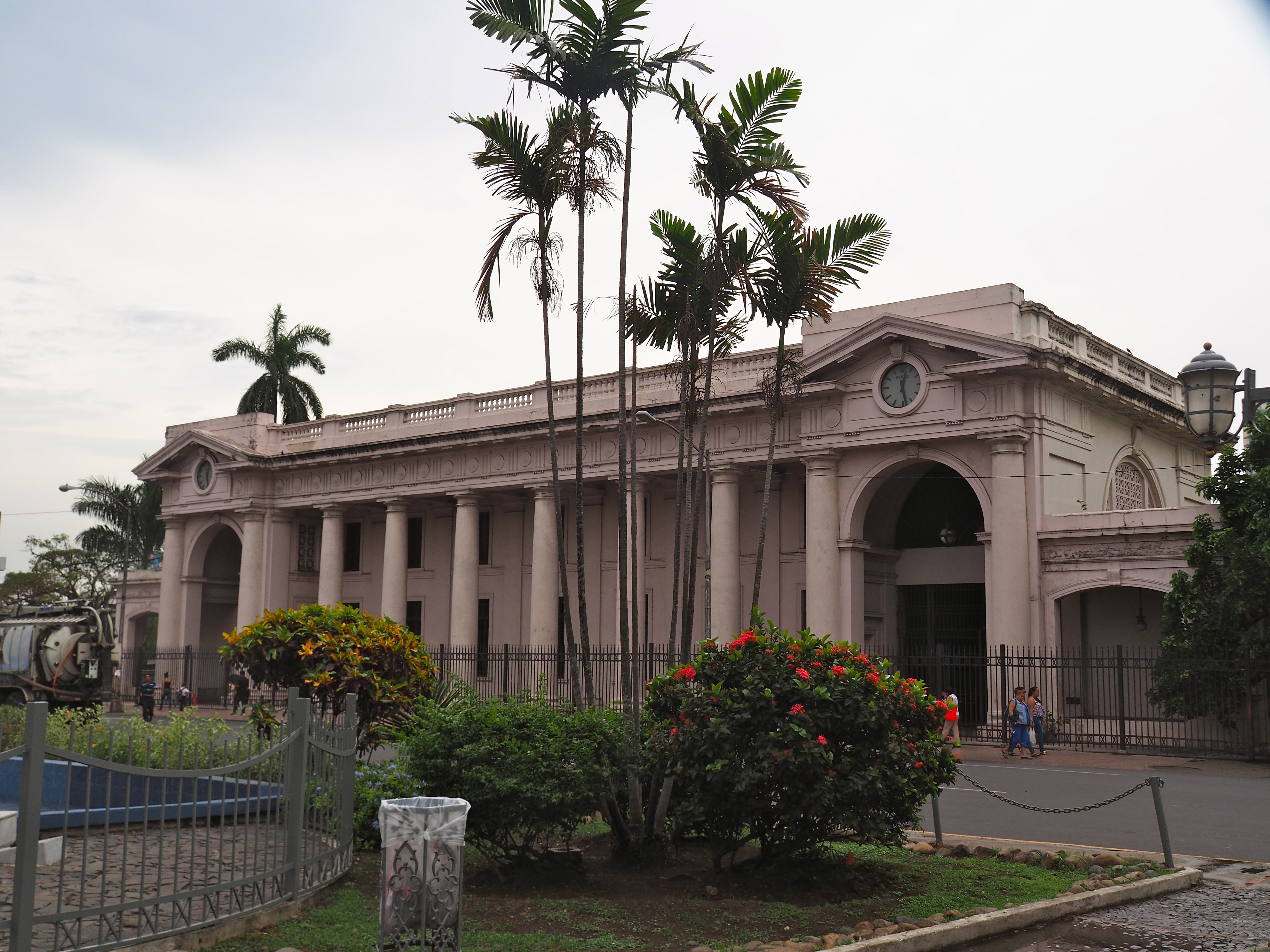
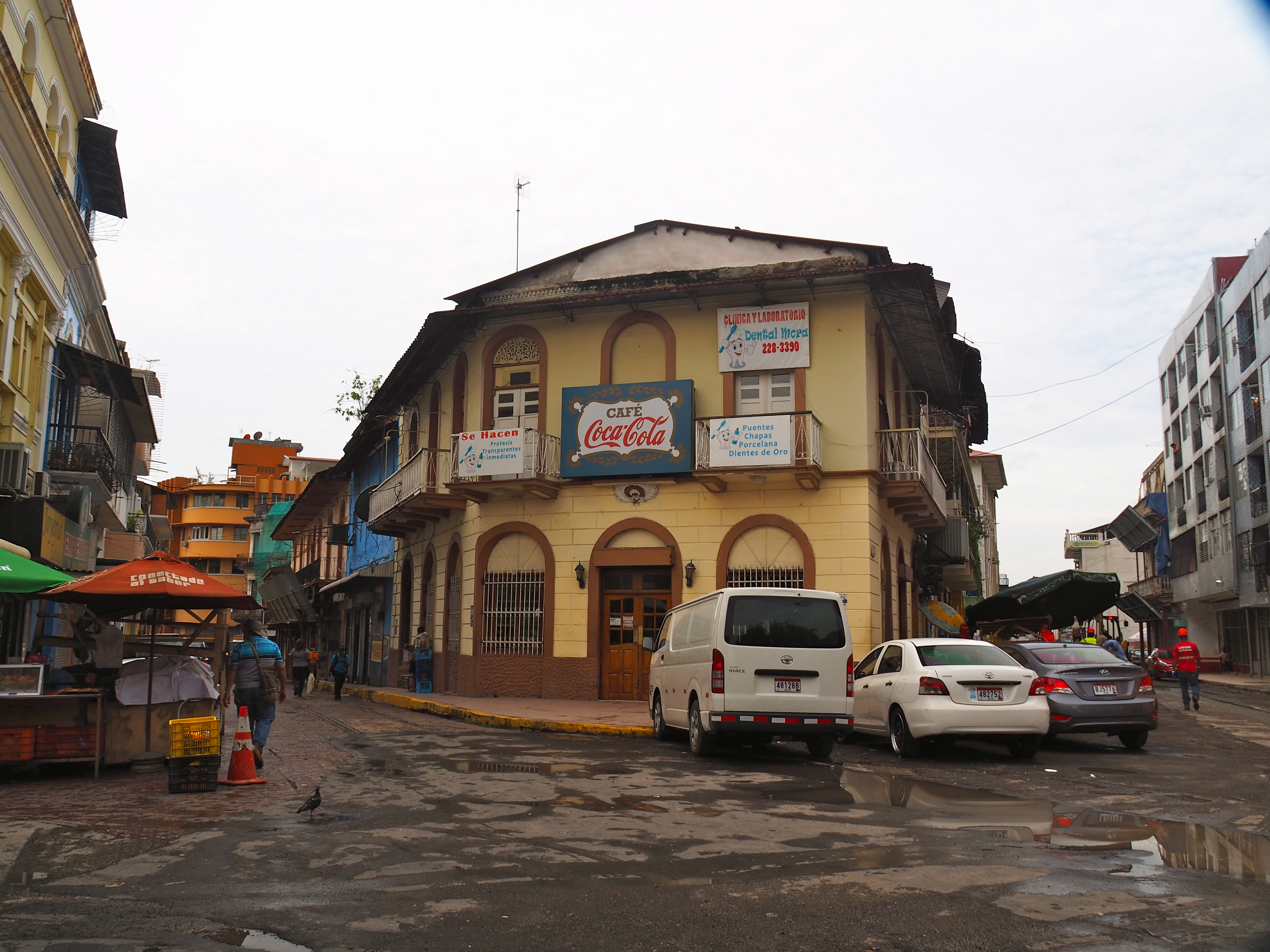
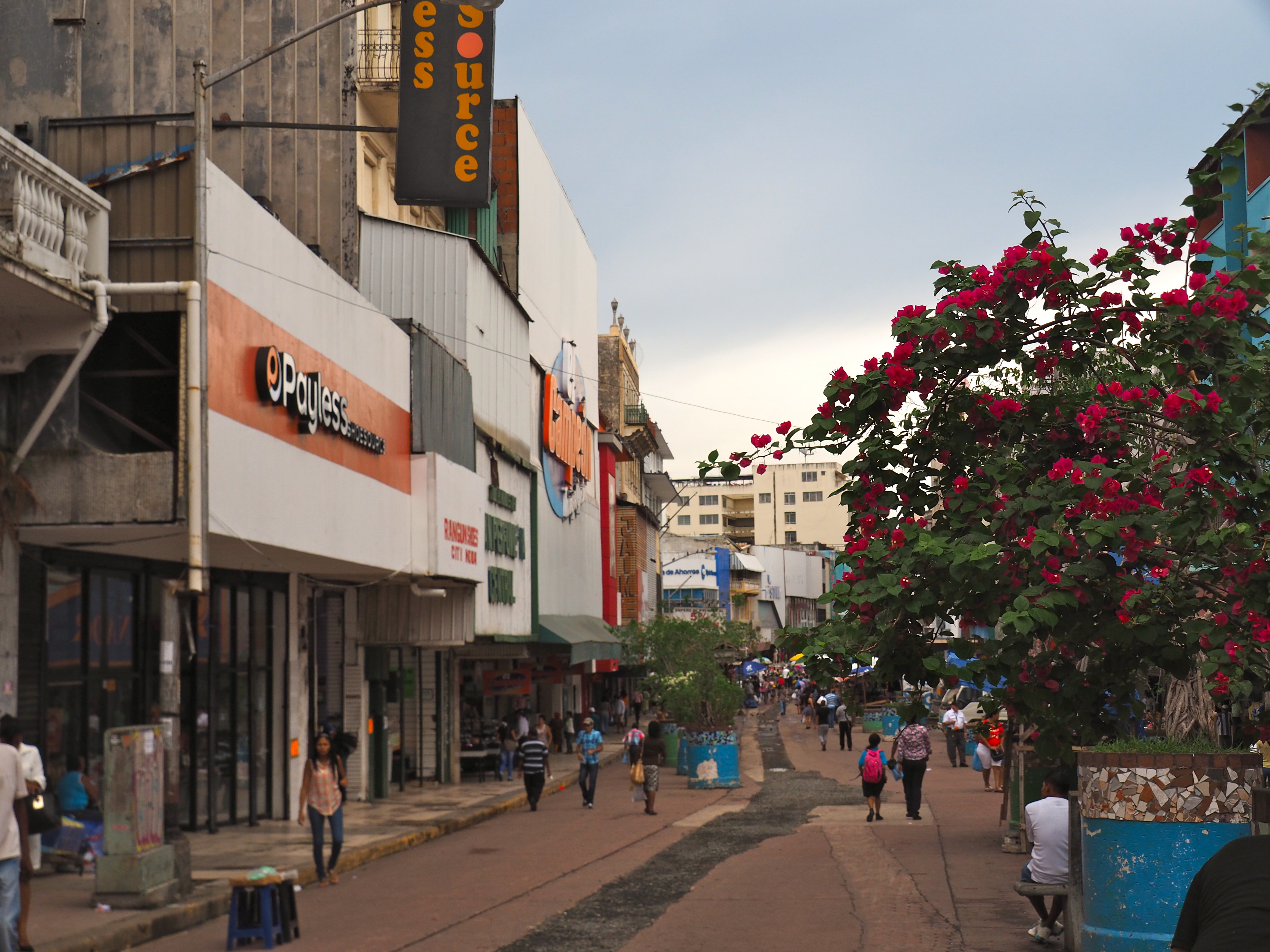
We started off with a walking history tour of Casco Viejo, popping into a gourmet wine and beer shop to collect some beers to enjoy down on the waterfront, whilst Joey explained the recent revitalisation of the old town over the last few years as more and more foreigners invest in the area, making it more attractive to both tourists and (wealthy) locals alike.
Casco Viejo
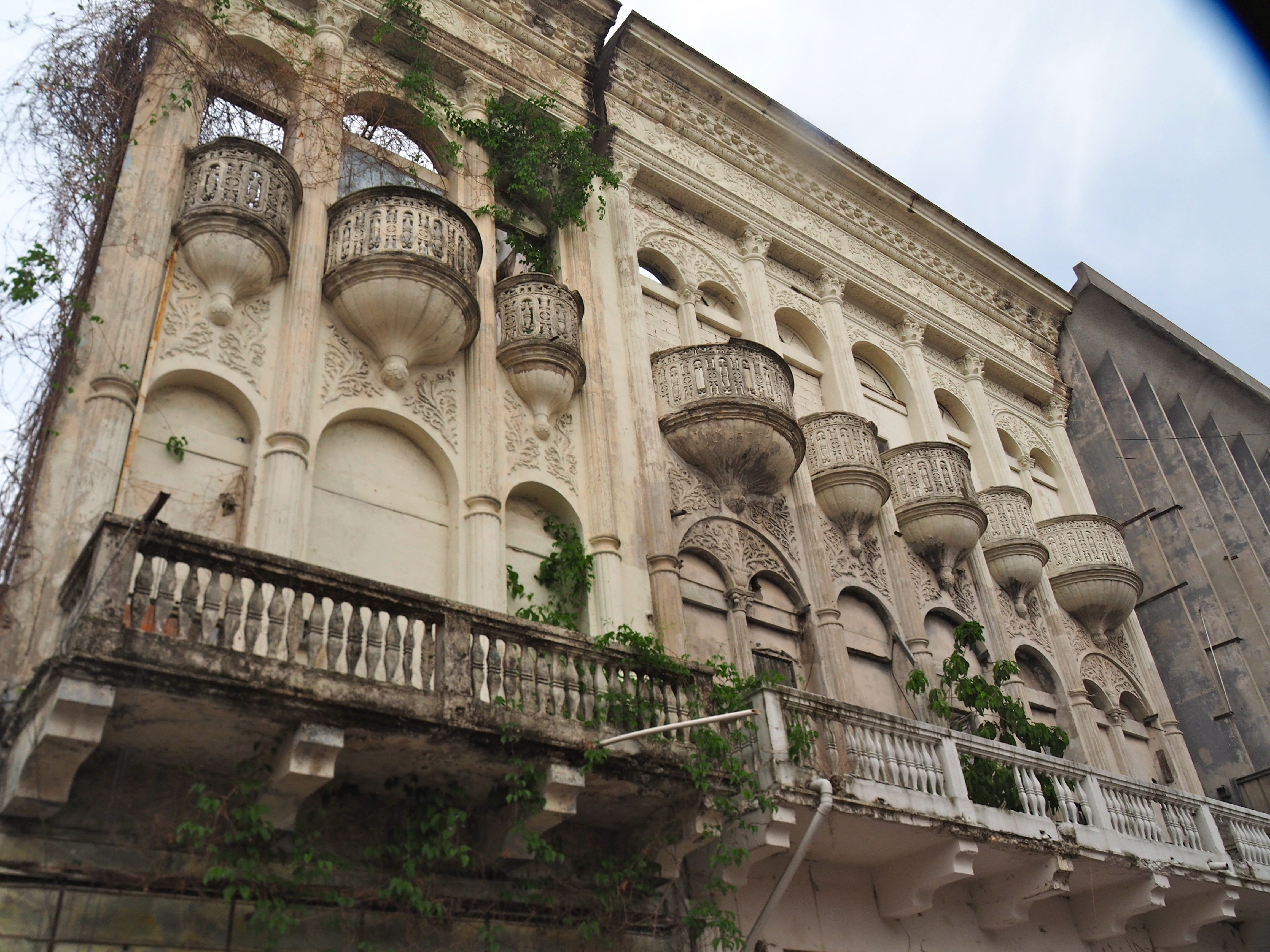
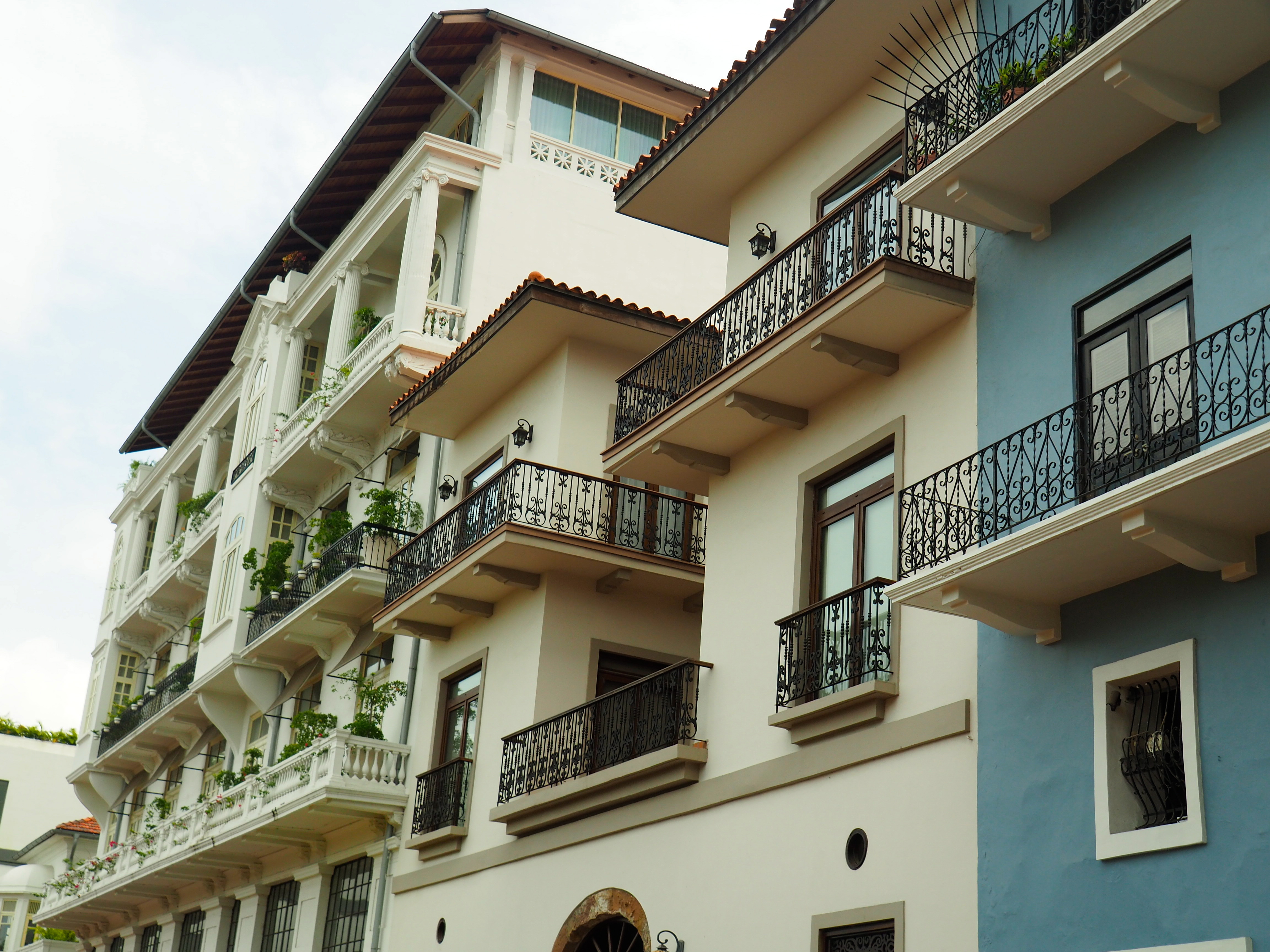
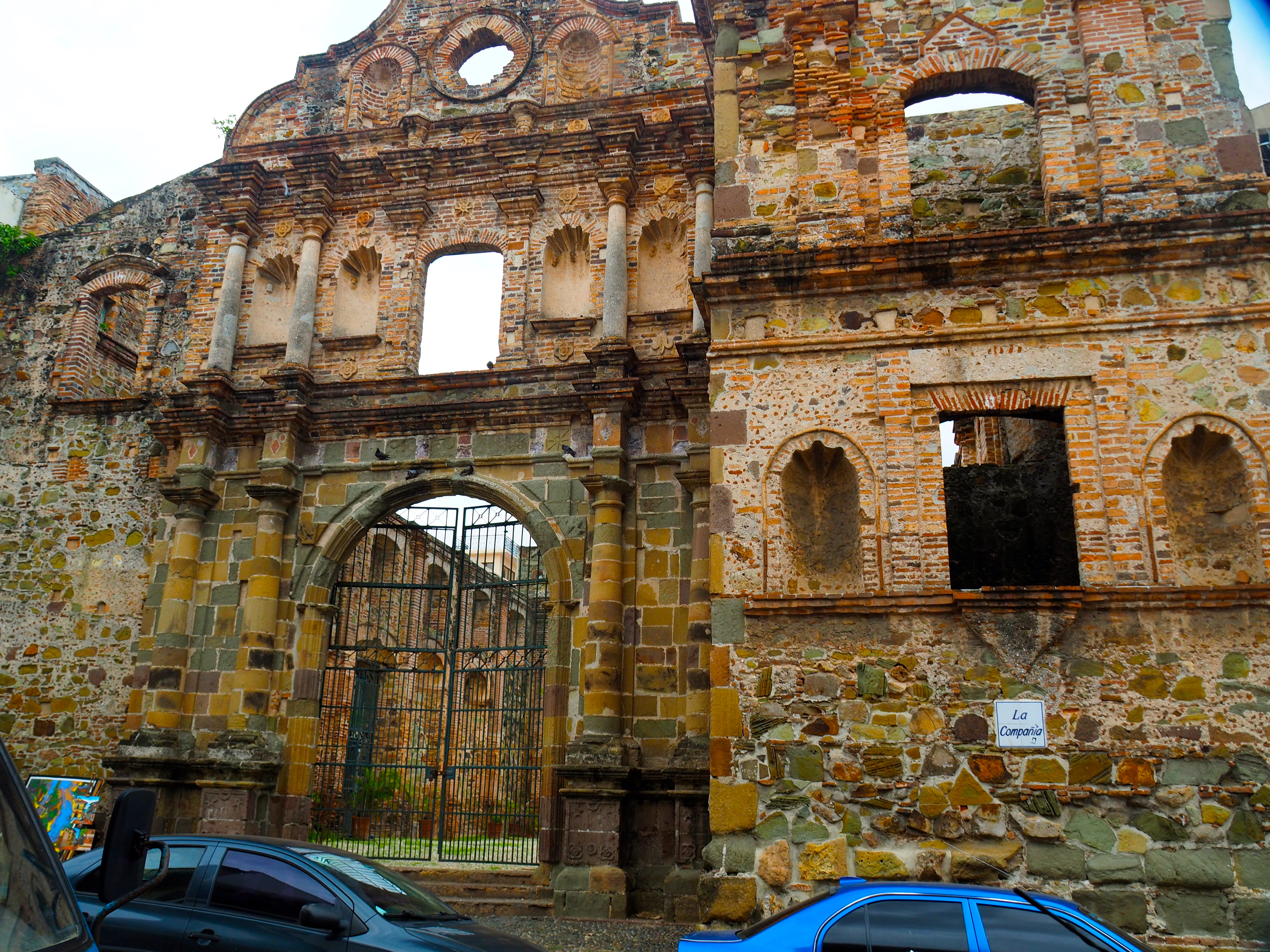
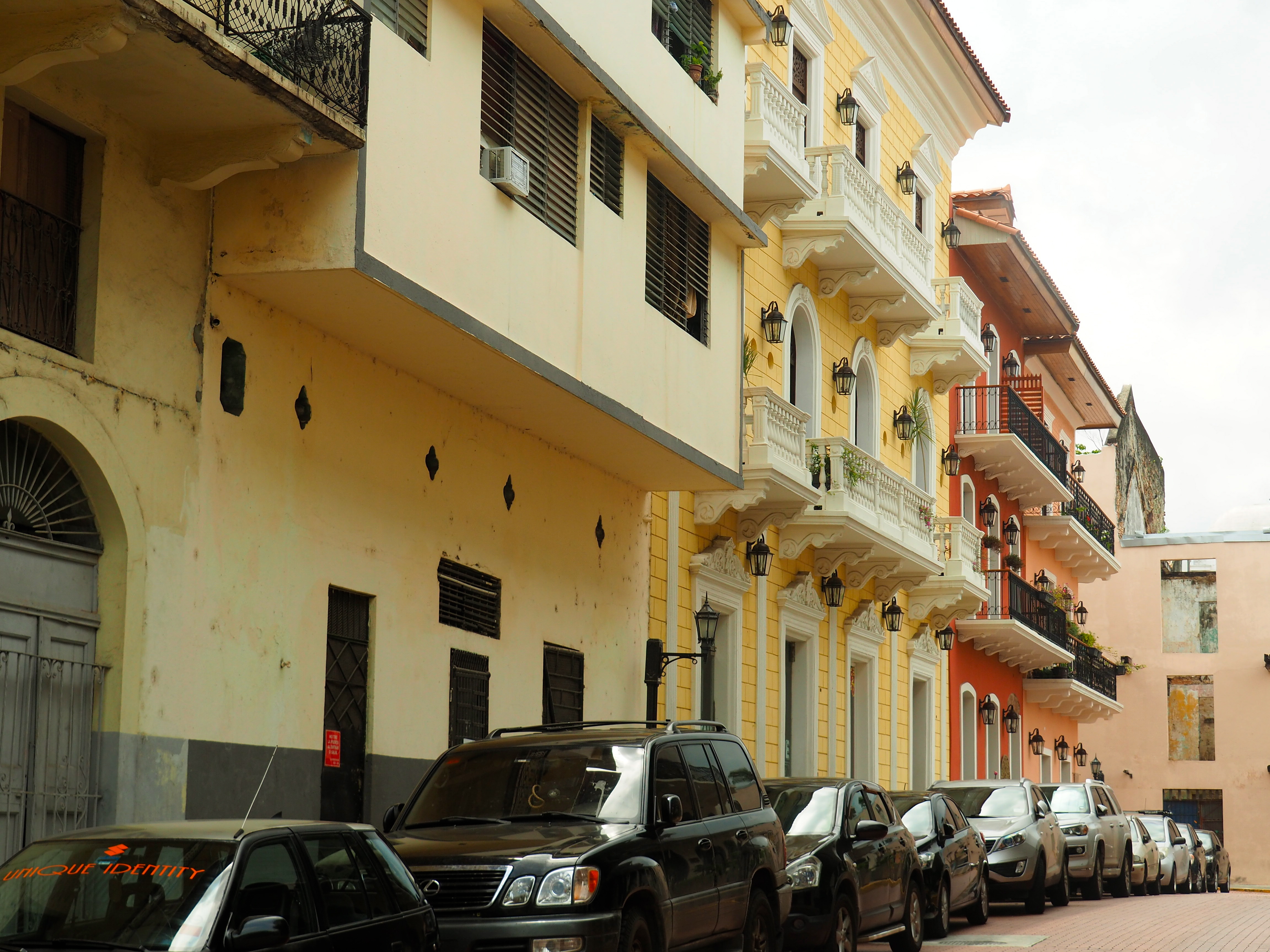
Wine, glorious wine!
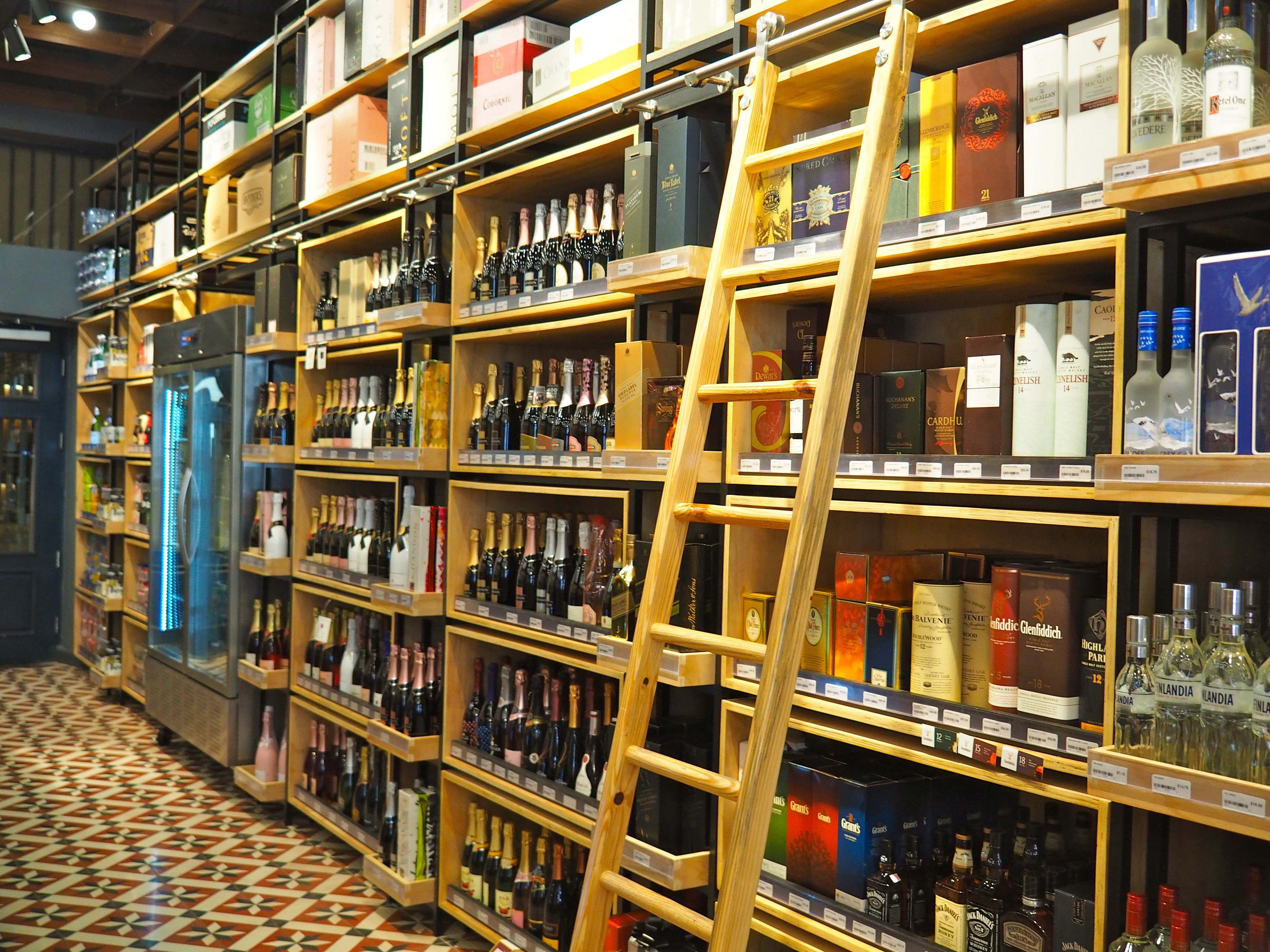
We then ducked into a boutique brewery for a beer tasting and saw where some of the Panamanian beers are brewed (in Little Creatures style, the full kegs are in full view!) before strolling along the waterfront, where we got a fantastic view of the impressive skyline full of skyscrapers – very different to any of the cities / towns we had seen in the last few months!
Beer tasting!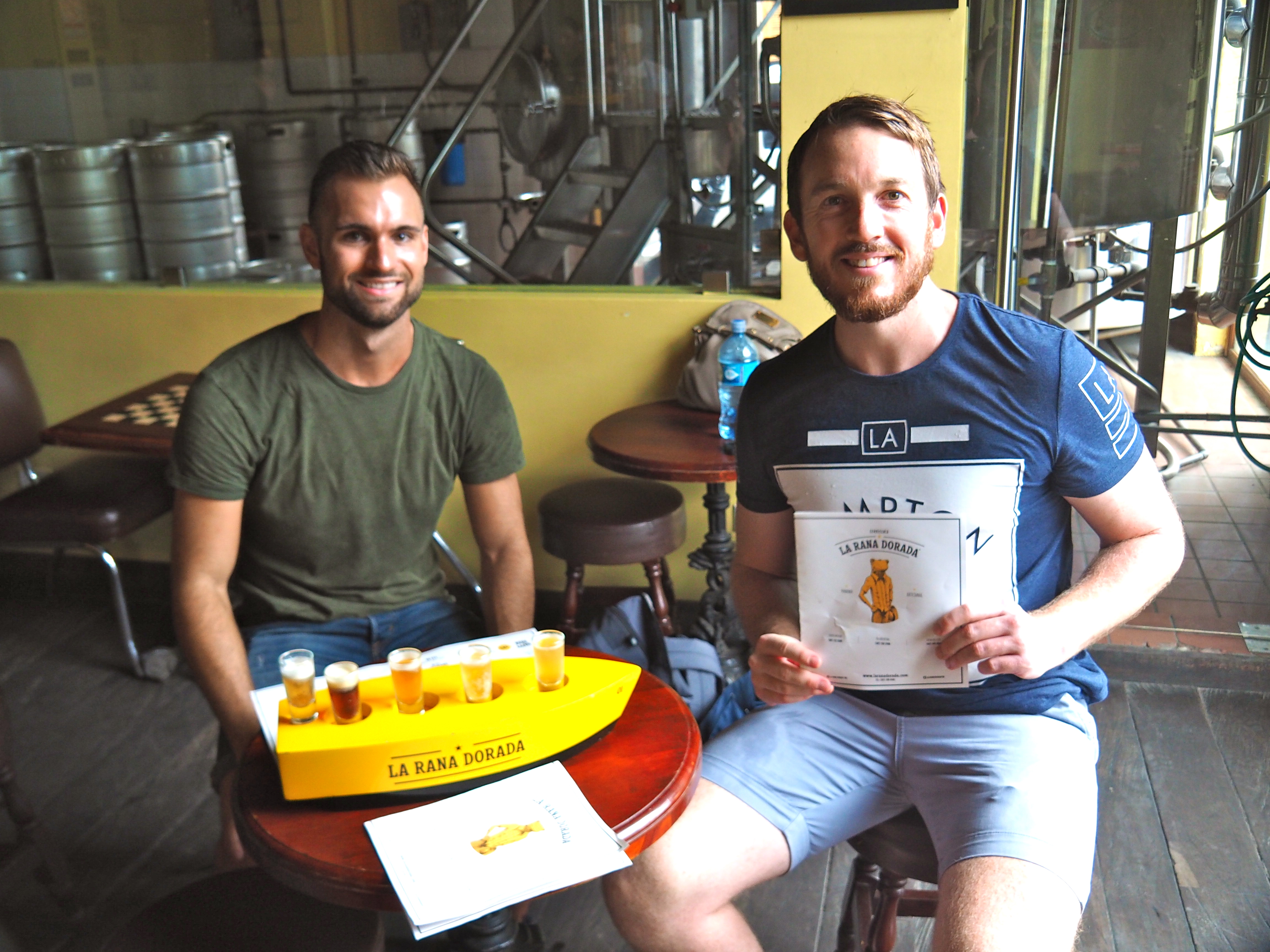
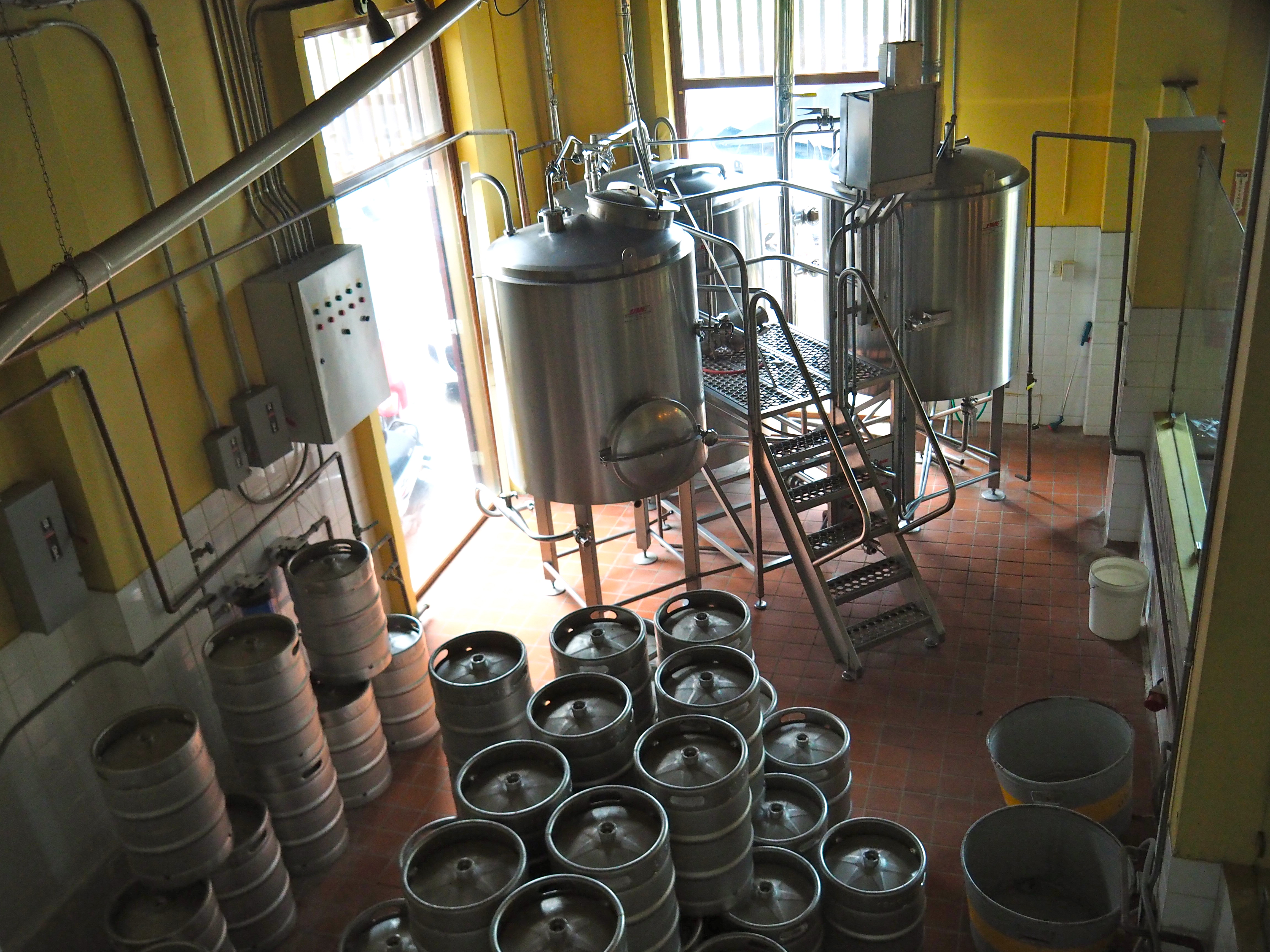
Waterfront views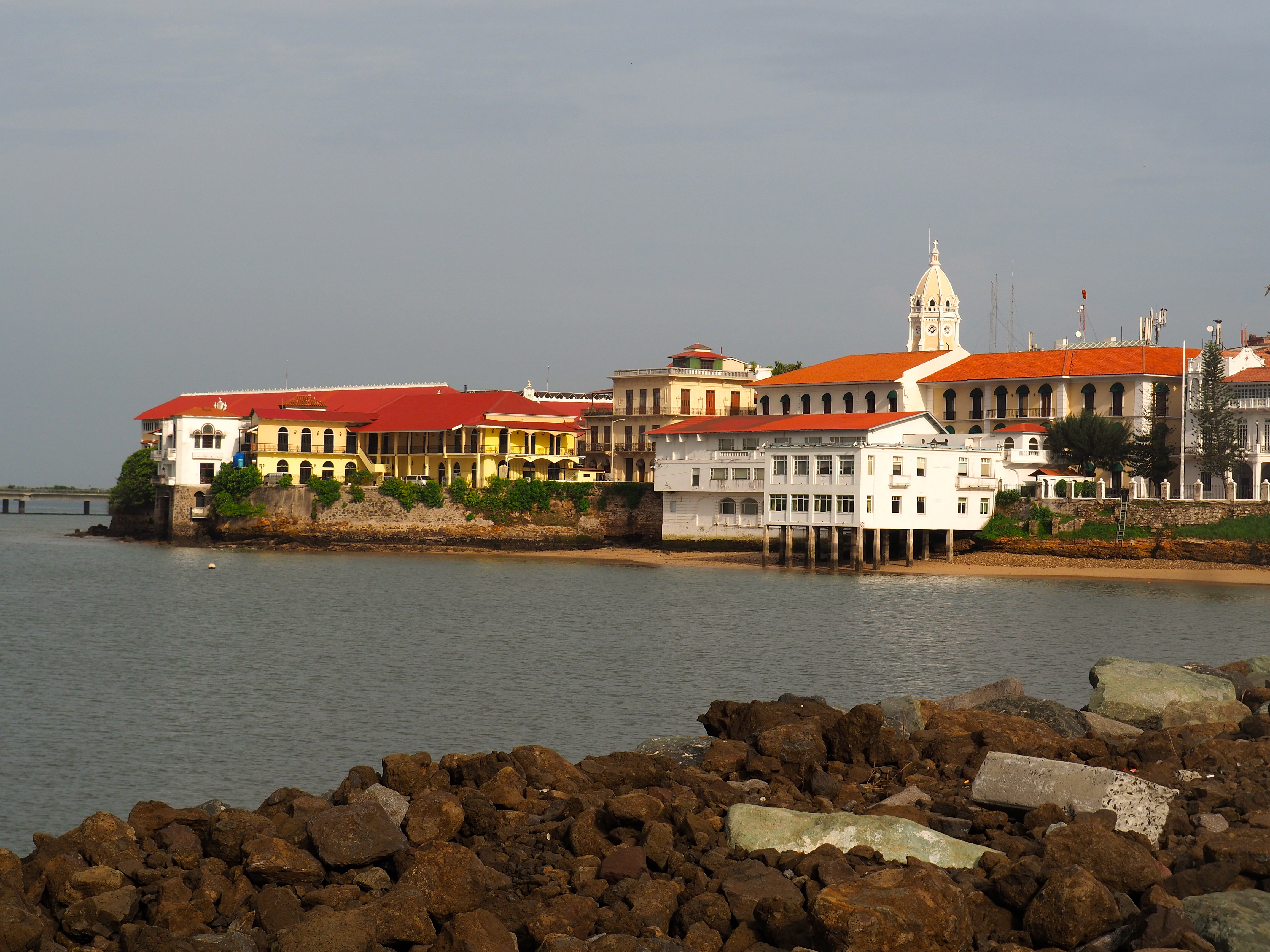
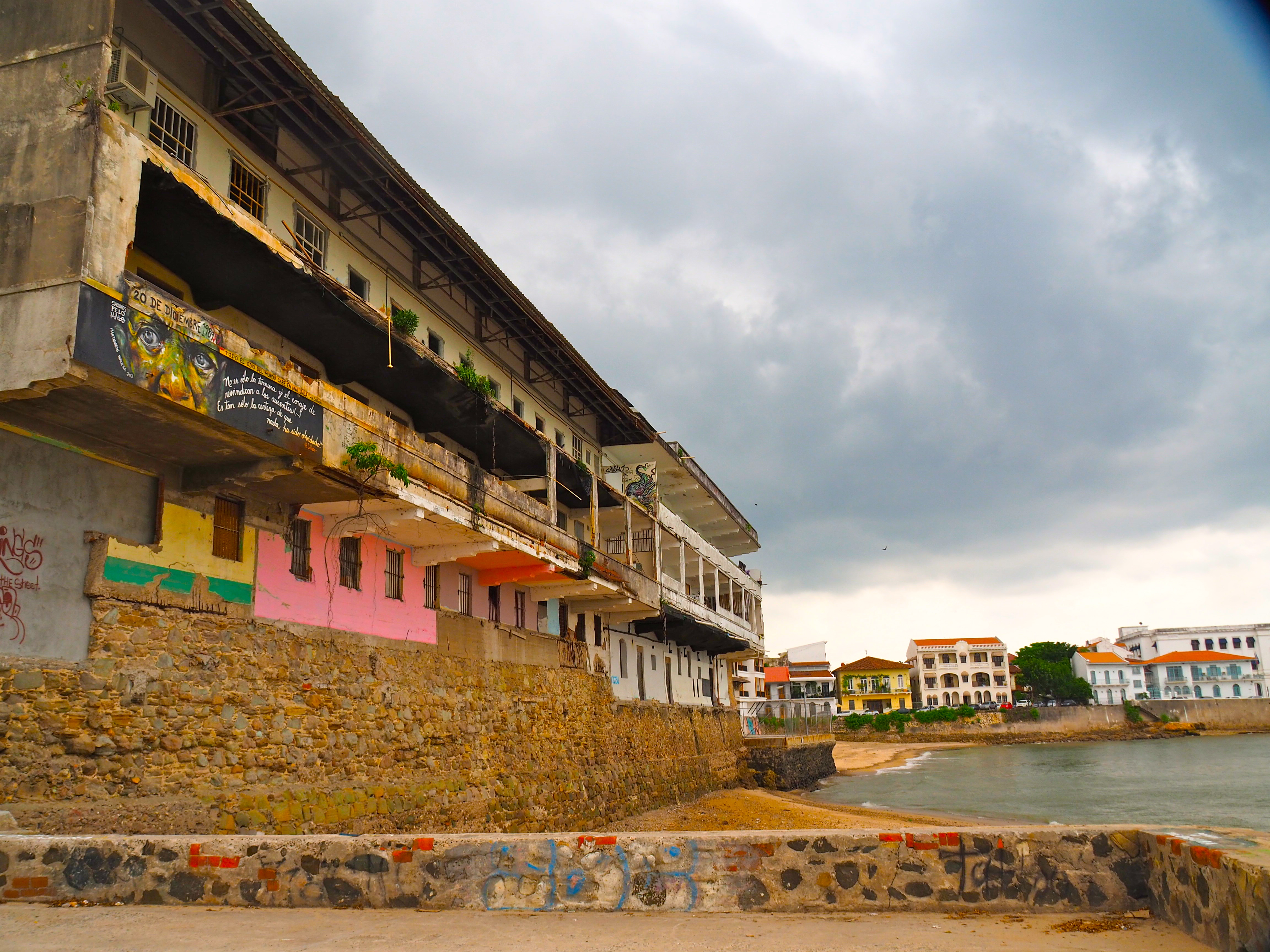
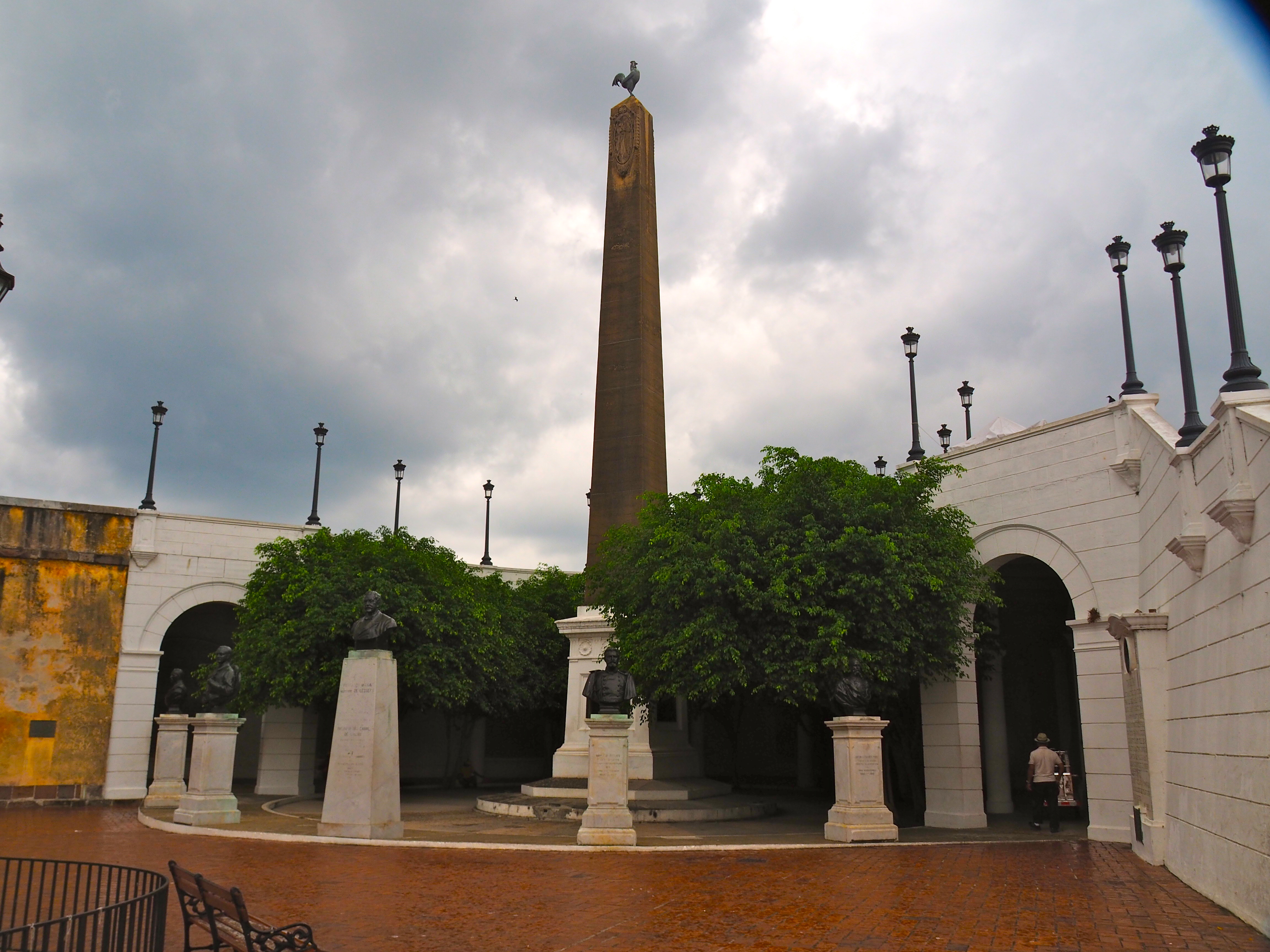
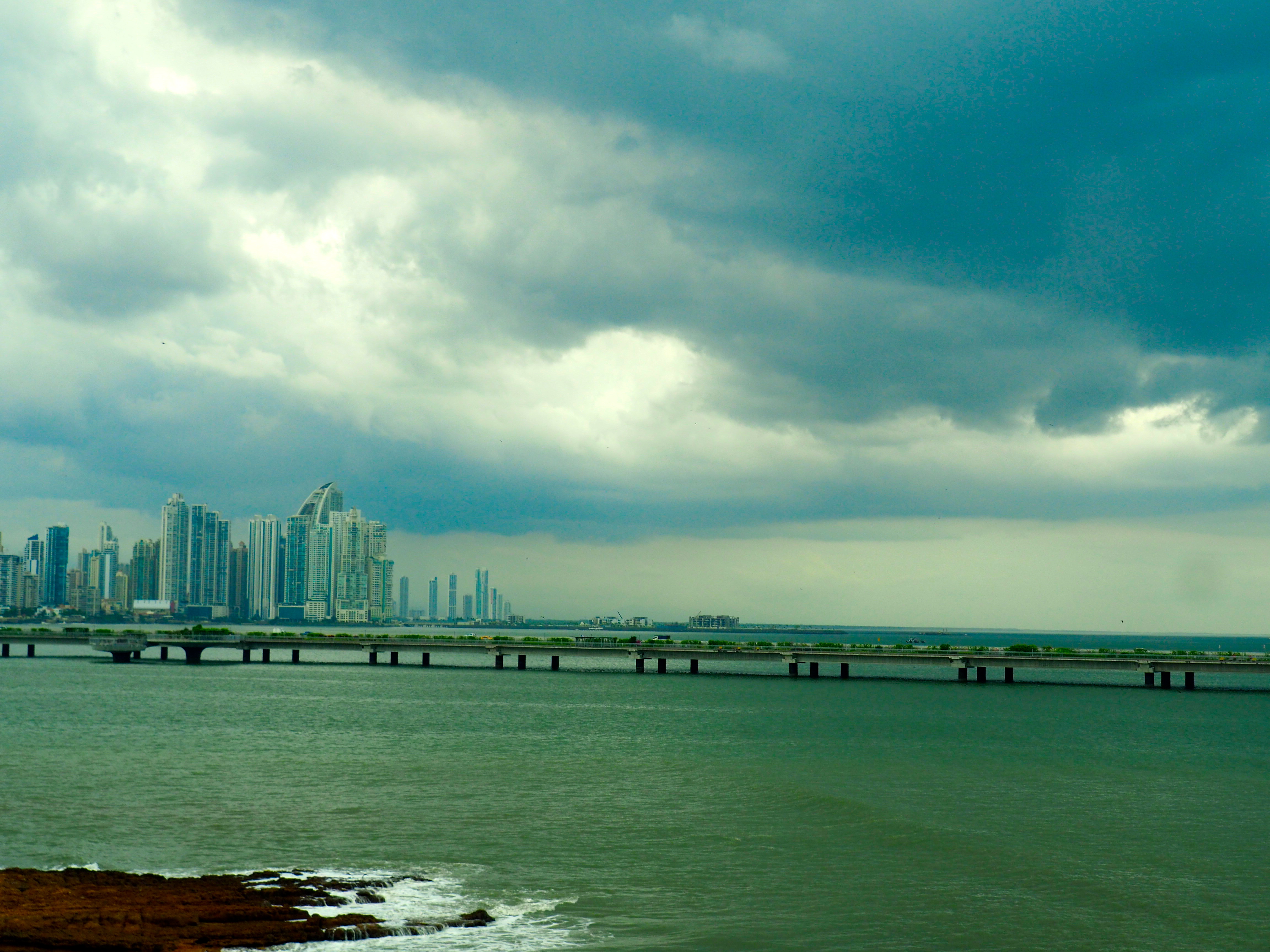
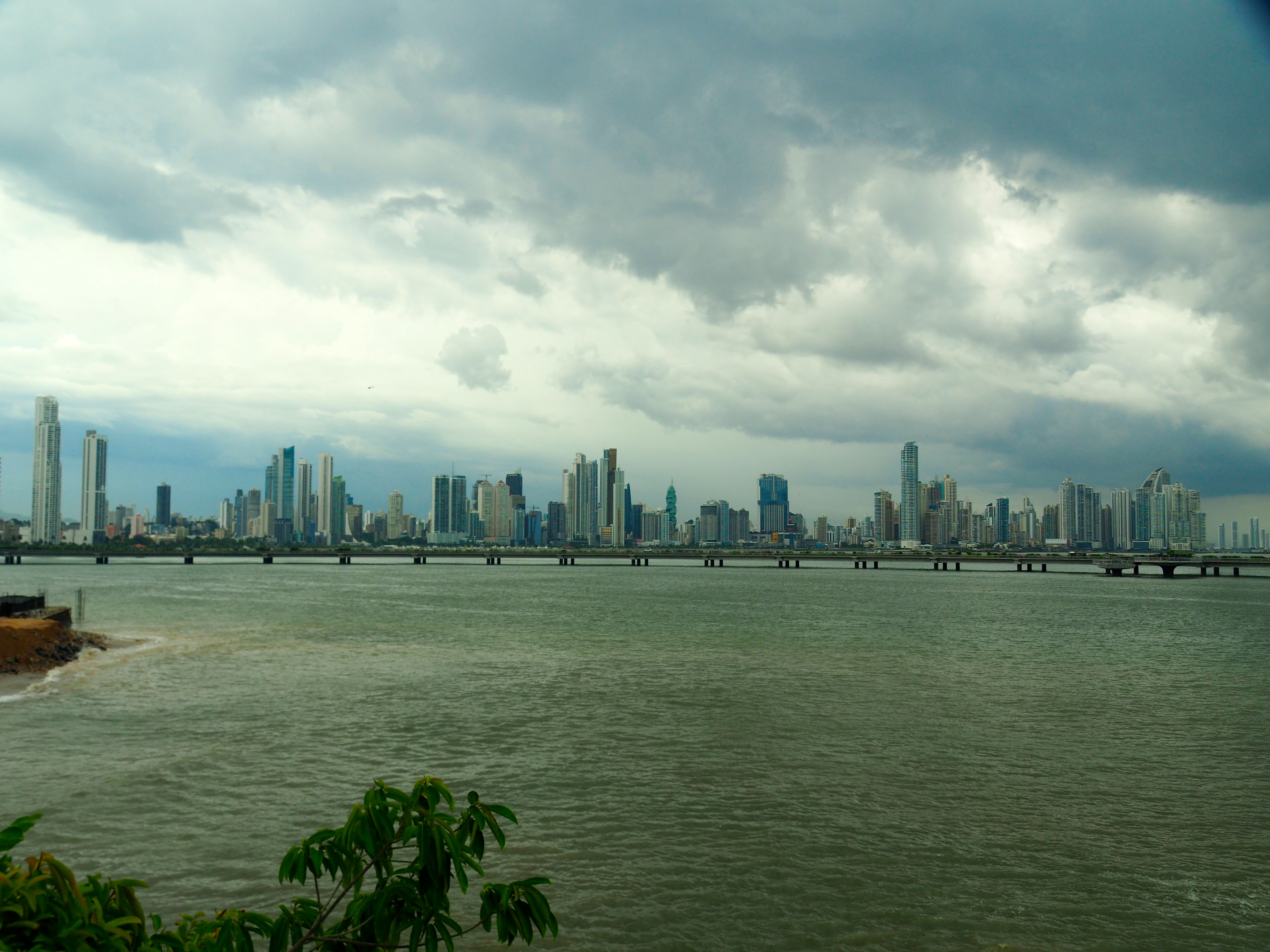
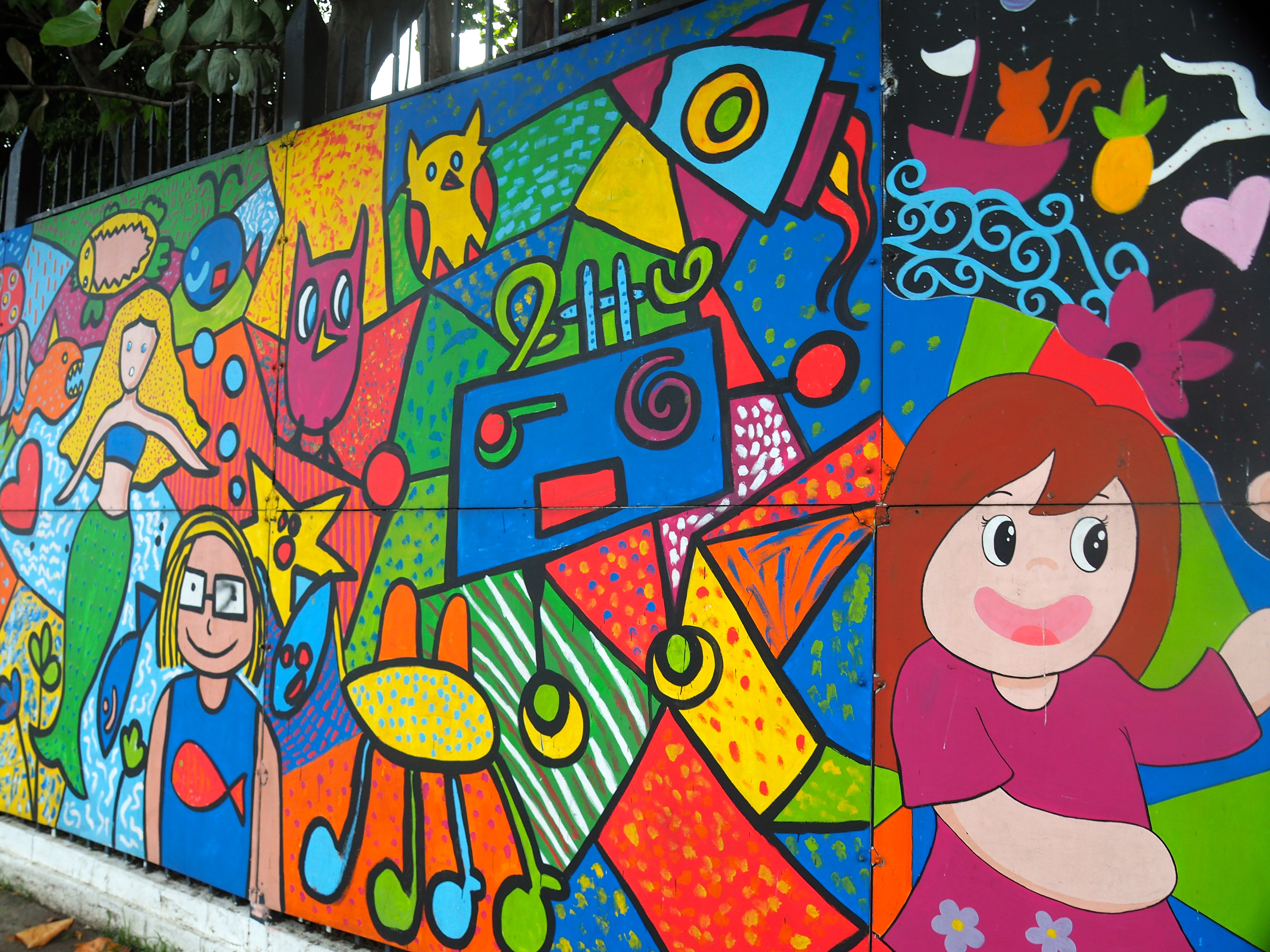
Next up, we jumped onto the recently opened metro system and headed into the financial and commercial district where we would see the skyscrapers up close, as well as have lunch at a typical Panamanian restaurant, Trapiche, frequented by the businesspeople of Panama City in their hectic city lunch breaks.
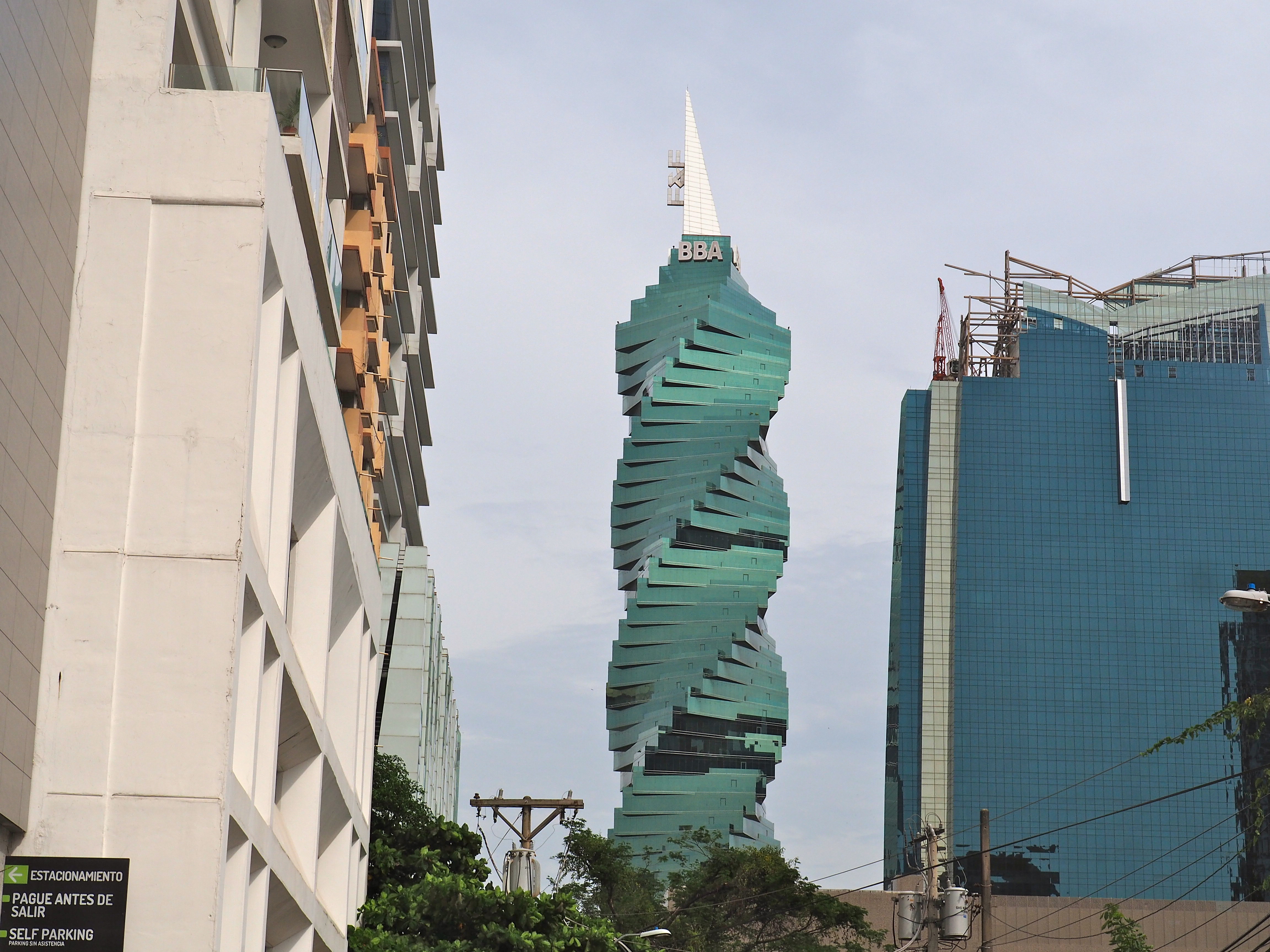
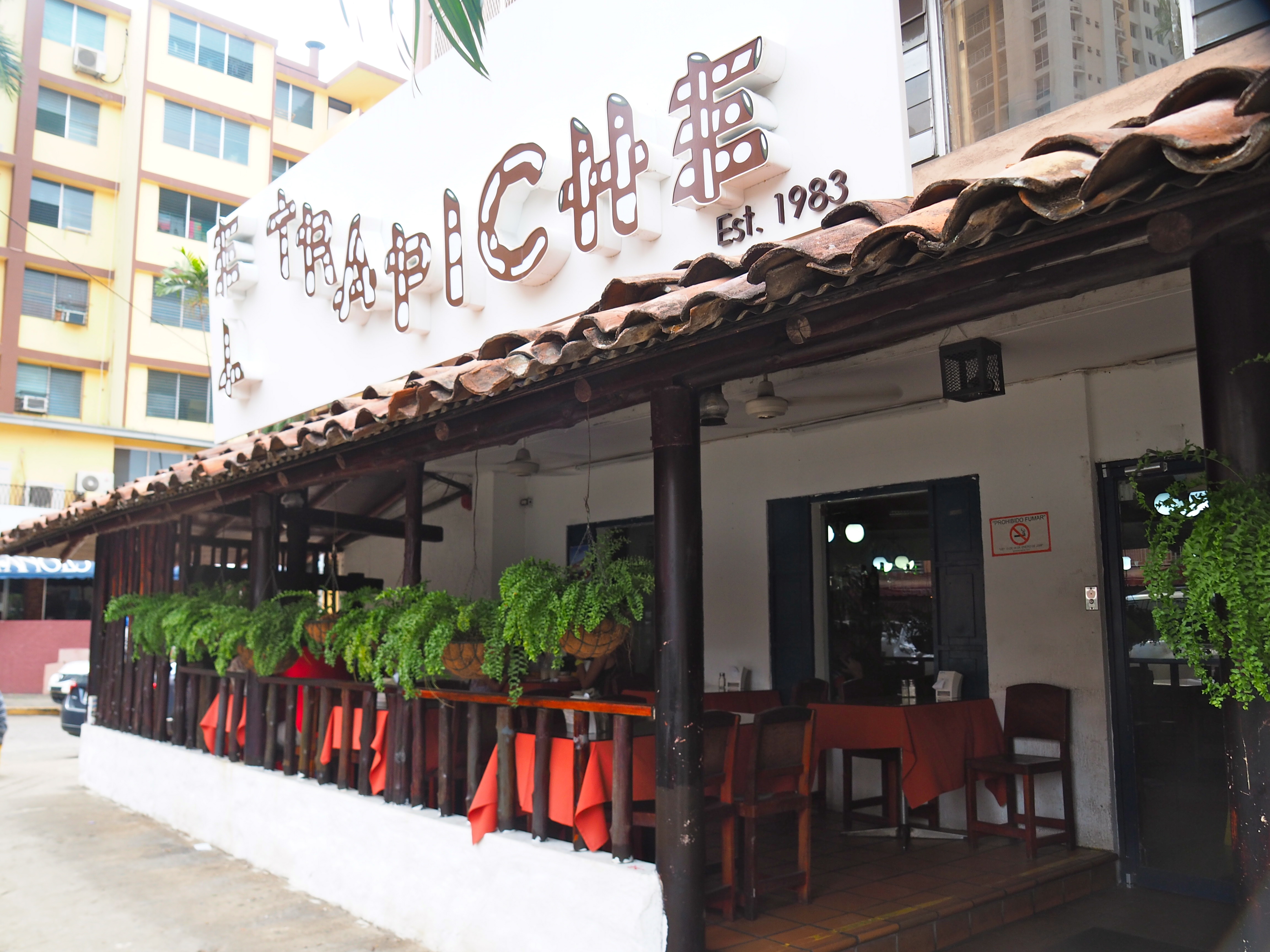
We were happy to let Joey take the lead in ordering our food, and all of it was cheap – and delicious! We shared a delectable pulled, shredded beef dish as well as chicken stew, made even tastier by the addition of the establishment’s famious hot sauce. Our sides include some empanadas, plantain fritters, rice, beans and a coleslaw style salad. The food was super tasty and I think all up, it only came to about US$5 per person!
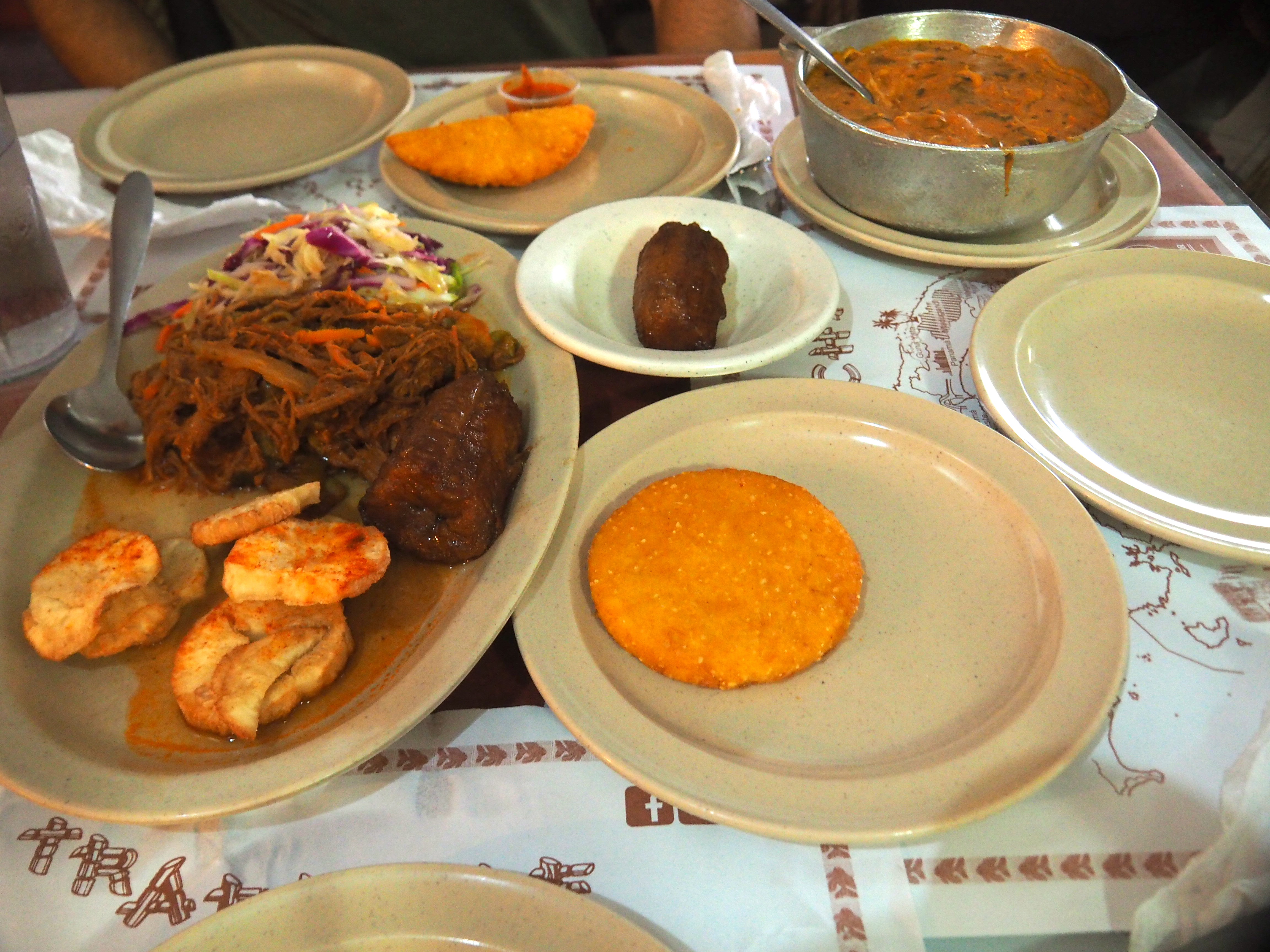
After lunch, it was time for another beverage stop, so we ducked into another corner shop, purchased some more beers at Joey’s recommendation, and then we wandered into a fancy, high end boutique hotel. We then snuck into the hotel lift and went all the way to the rooftop, where there is a wicked (but for some reason, empty!) rooftop area with lounges, a pool and a FANTASTIC view over the city!
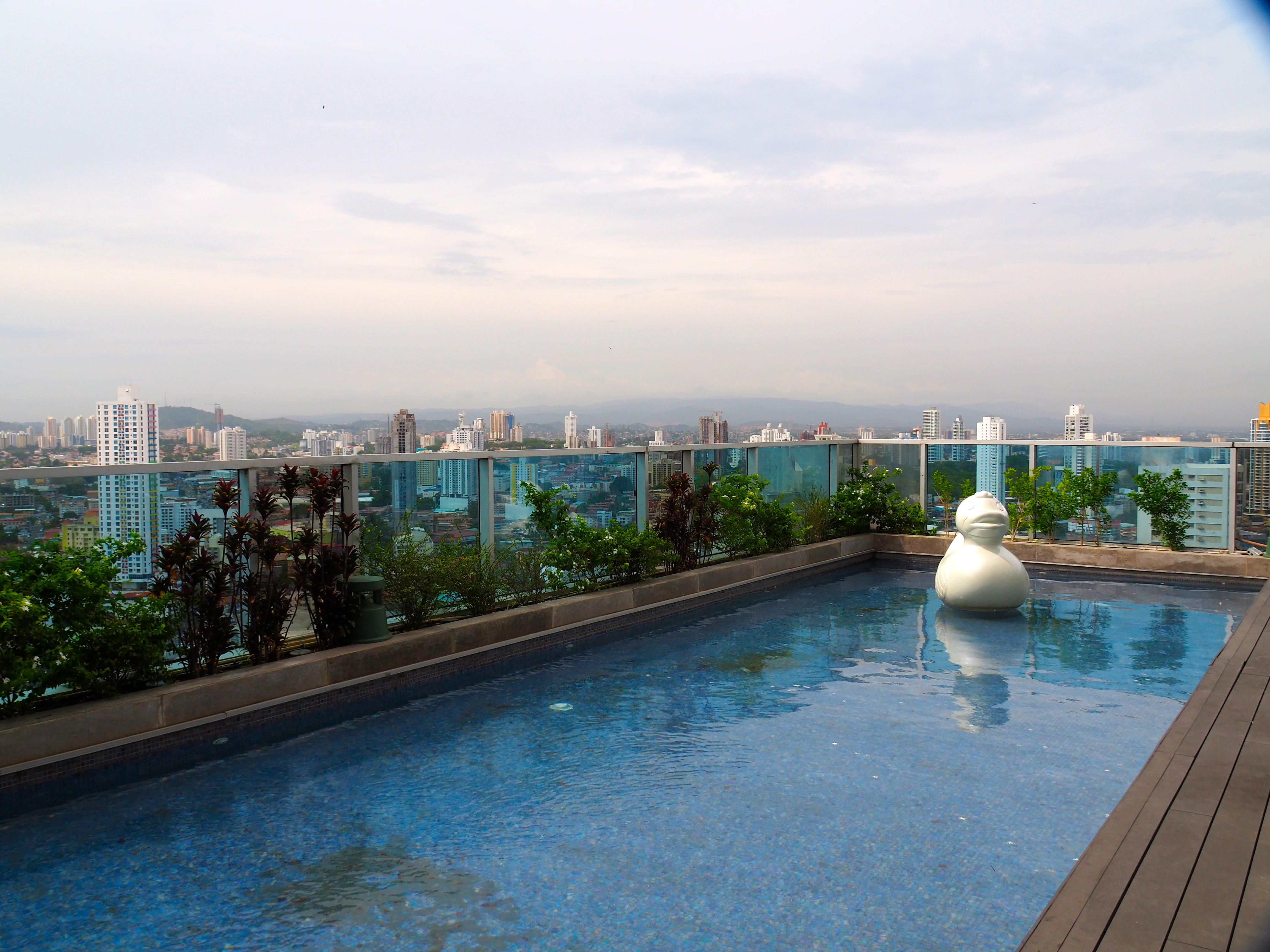
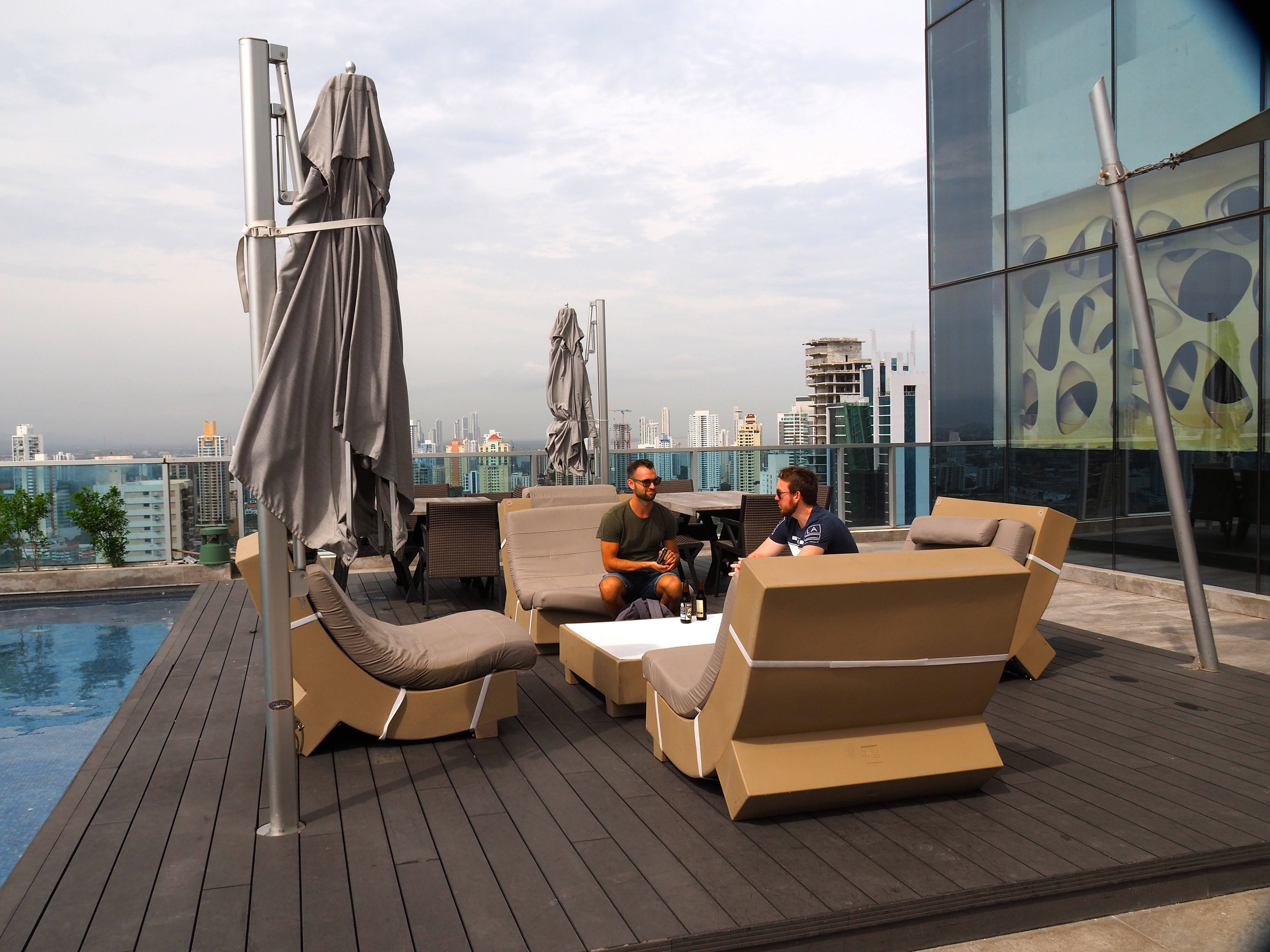
This is a bit of a hidden gem, and Joey said he had gone up there a few times, and had never been questioned – it actually looked like the hotel (which is new) had not yet finished setting up the outdoor area as an entertaining space, but when they do, I am pretty sure it will make one of the best places to enjoy sunset drinks in the city. And certainly not something we would have done if we hadn’t been with a local 😉
View from the top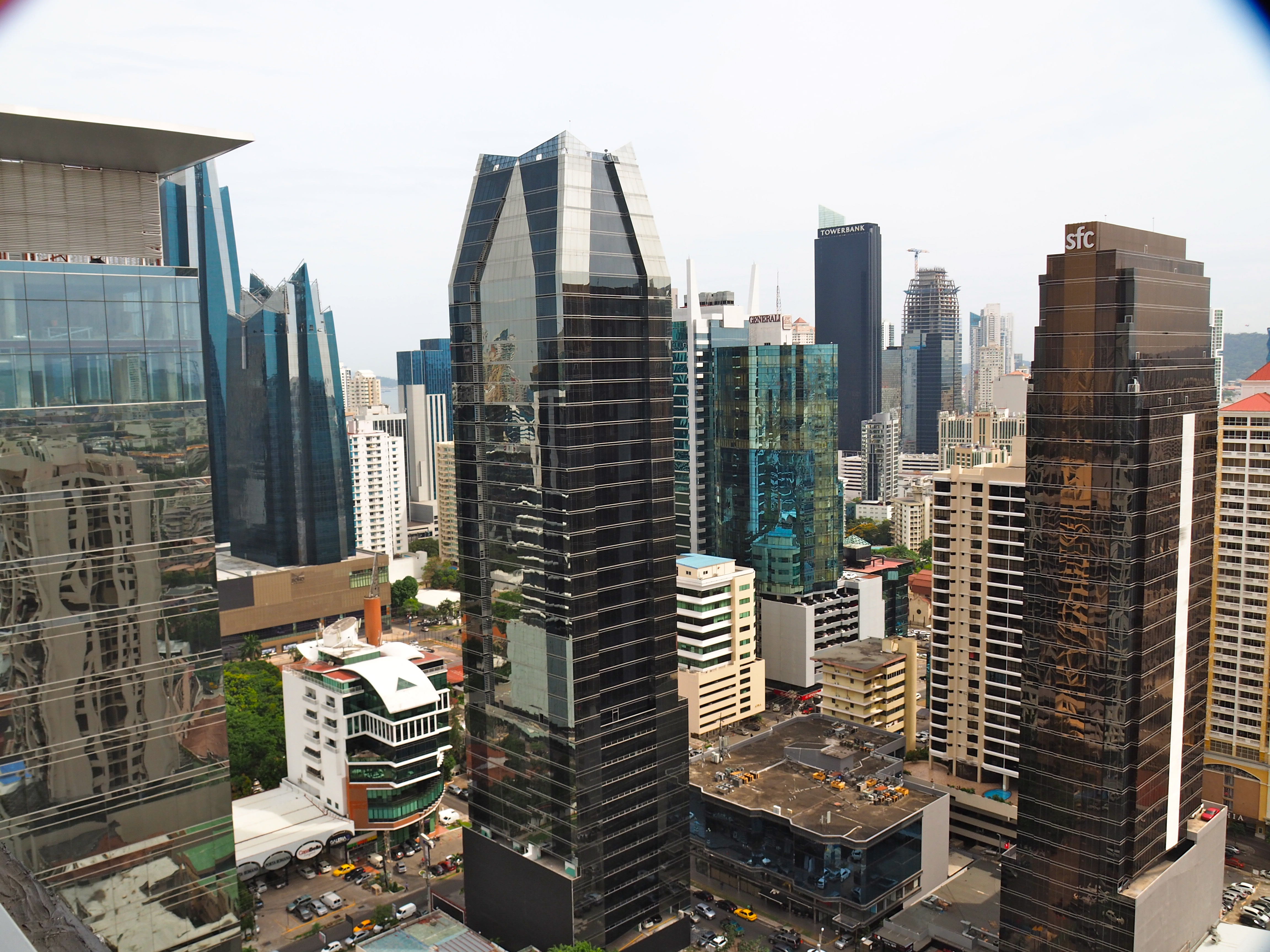
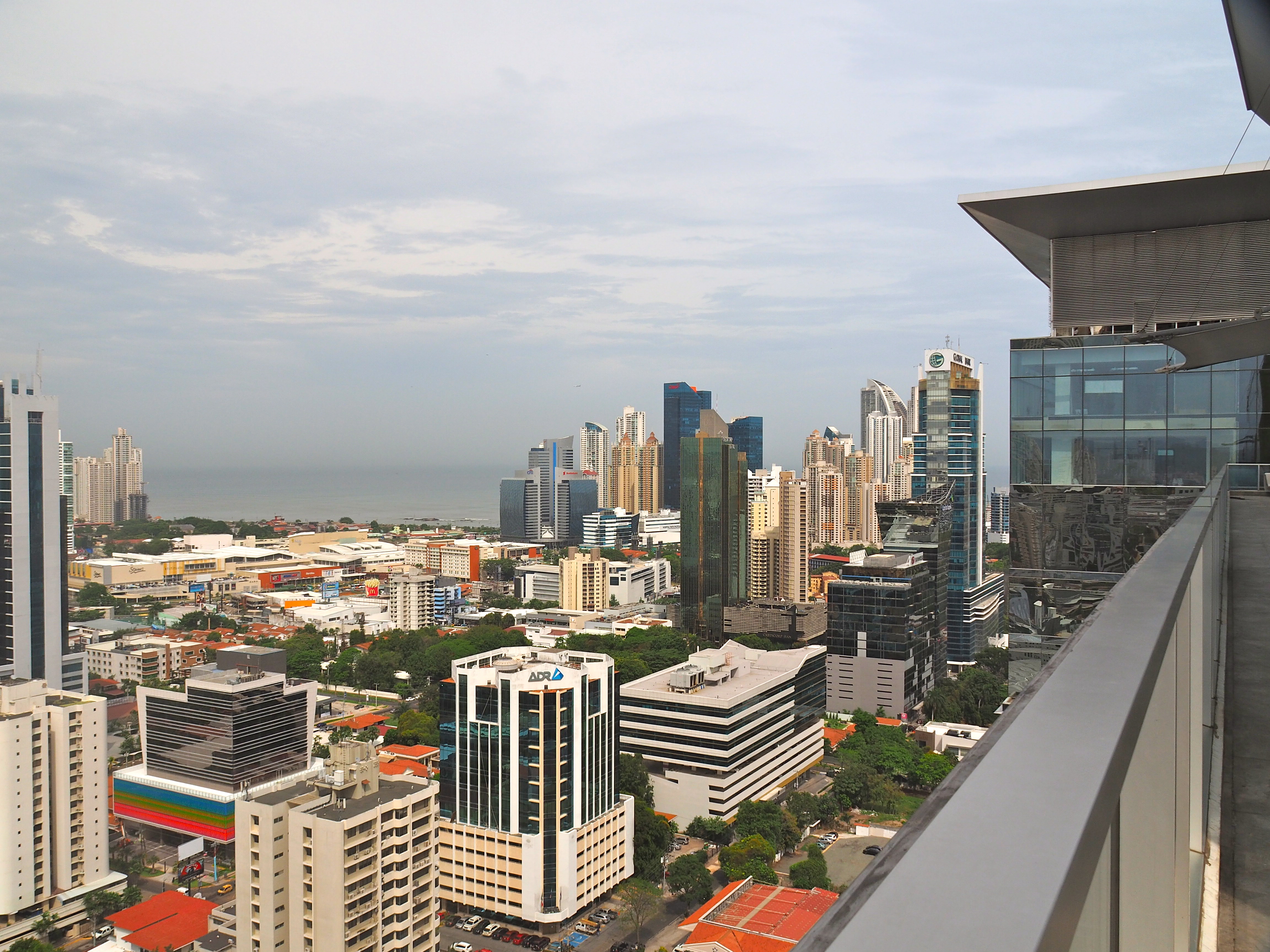
Next up, it was onto a local bus and then time for a walk along the riverfront (which actually reminded me of Langley Park in Perth) on our way to the famous Panama City fish market.
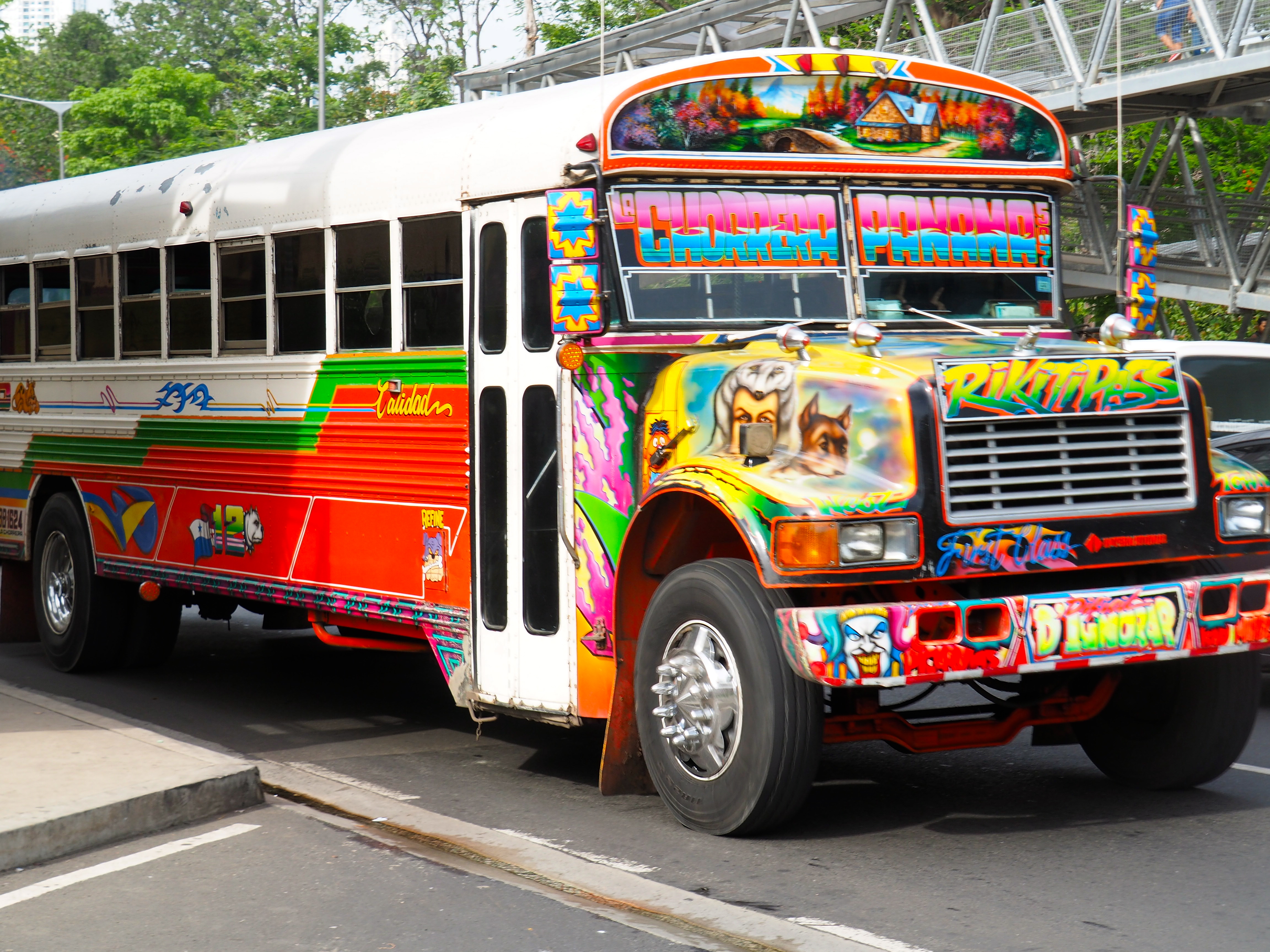
It was great to see all of the green space the city has kept for its cyclists, pedestrians and for the family picnics, with lots of amenity for those enjoying the boardwalk. And of course, we had to take a photo in front of the new Panama sign!
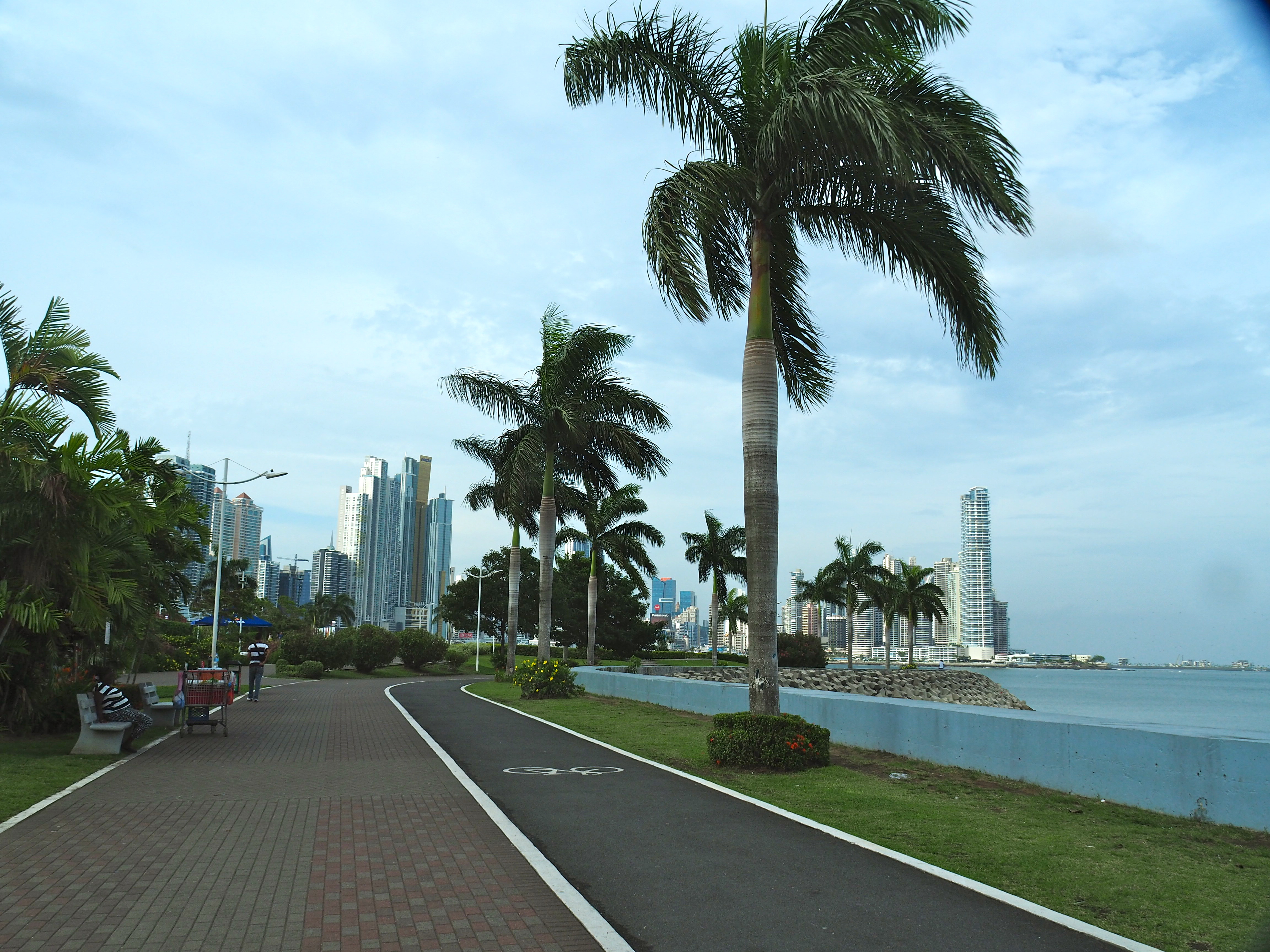
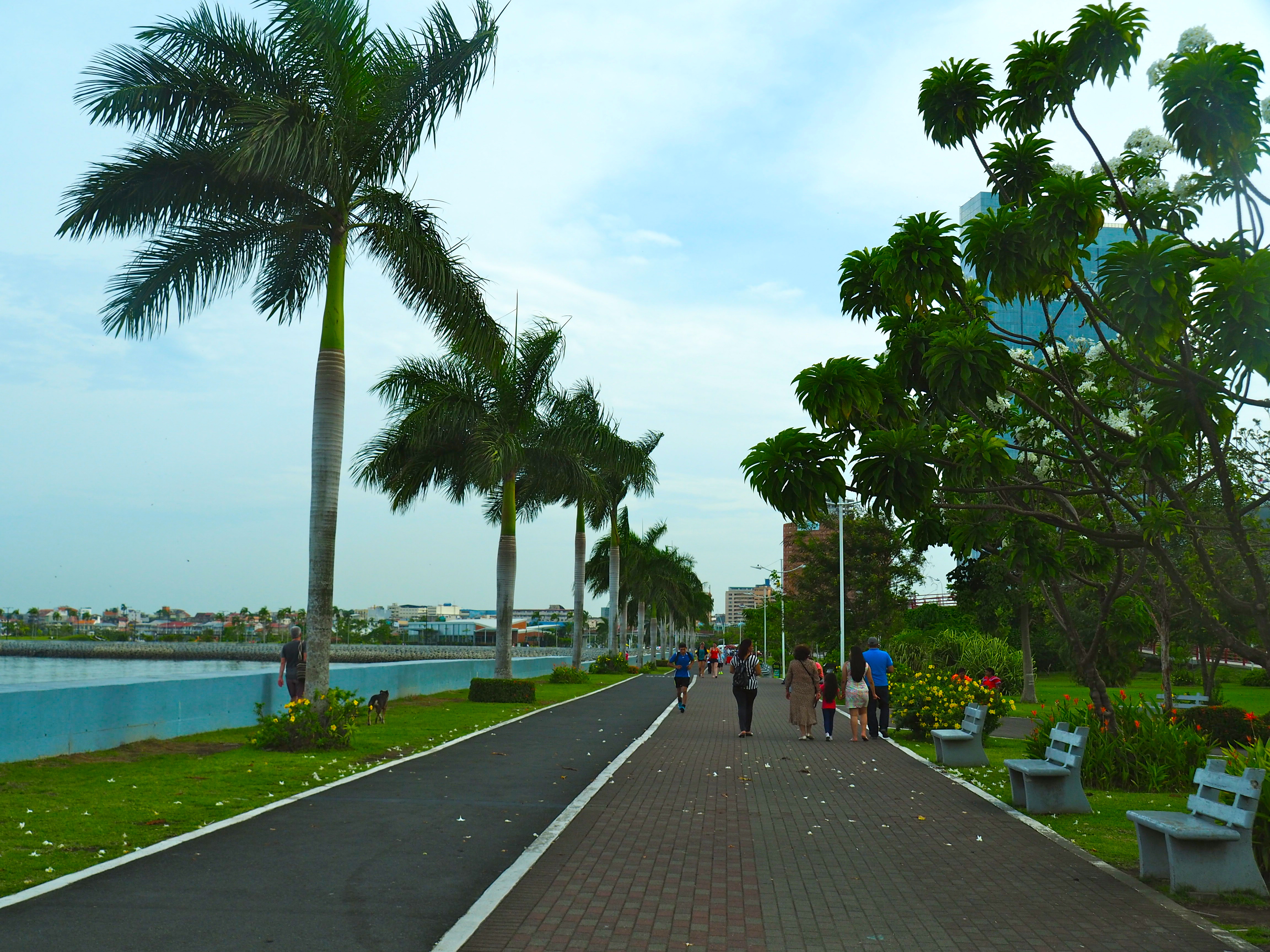
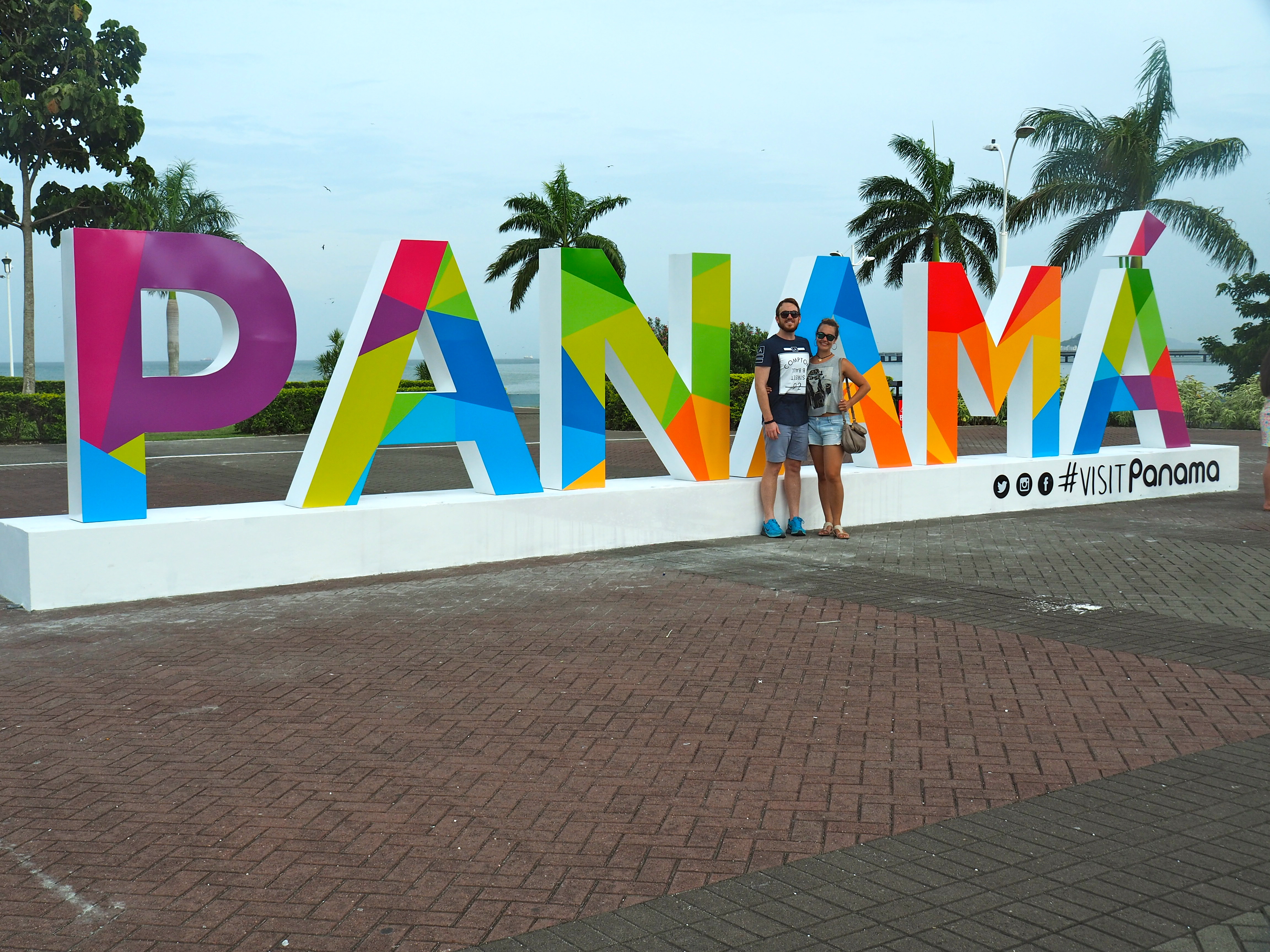
Unfortunately, but not unsurprisingly, by the time we arrived at the Fish Market it was late afternoon and the fish market itself was pretty much closed, but there are a number of casual (and fancy!) dining spots that cater to those wishing to enjoy some of the local seafood on the spot.
The Fish Market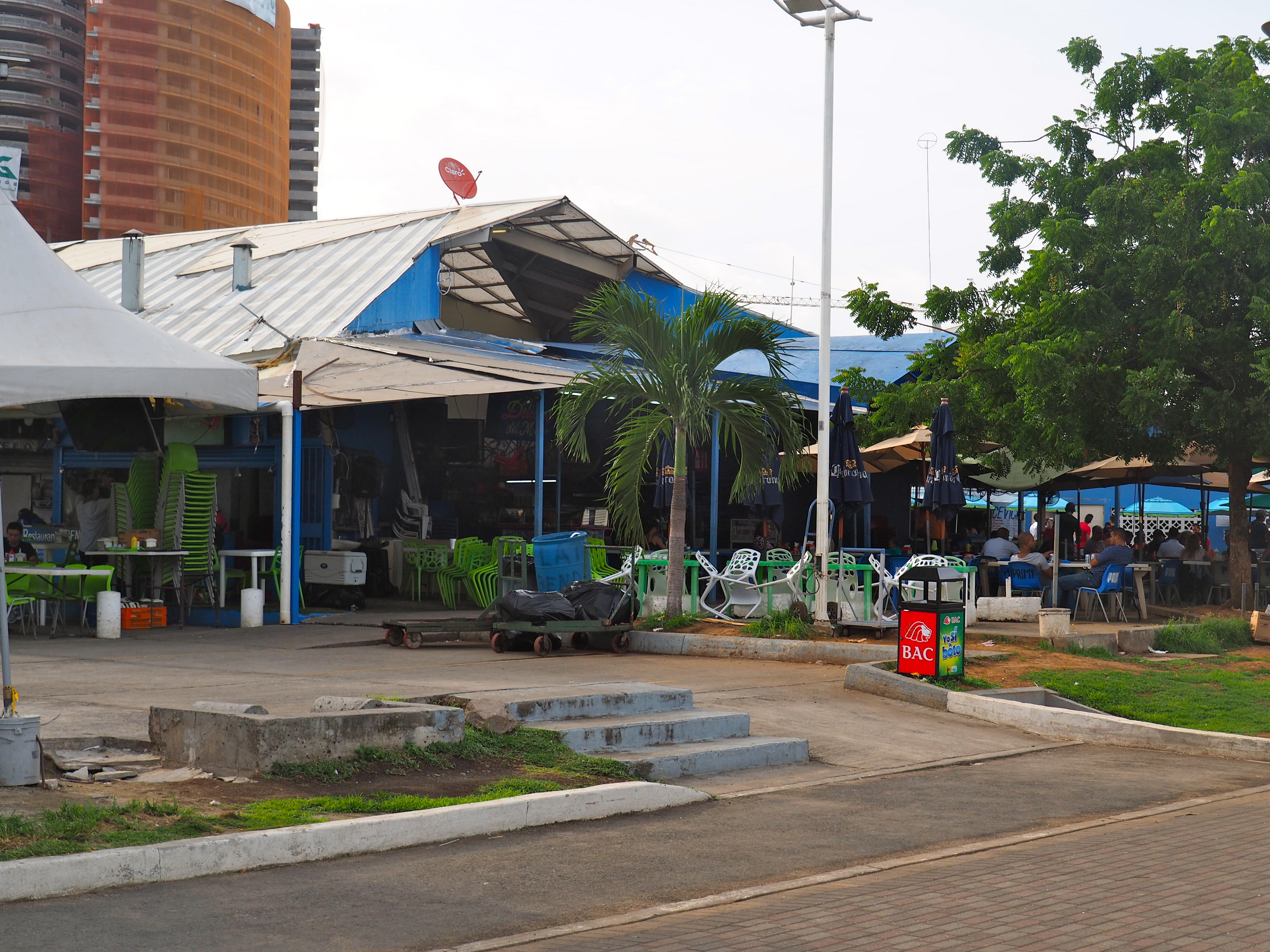
I had read A LOT about the cheap and fresh ceviche sold at the fish market, and Joey had a favourite spot for us to hit up first.
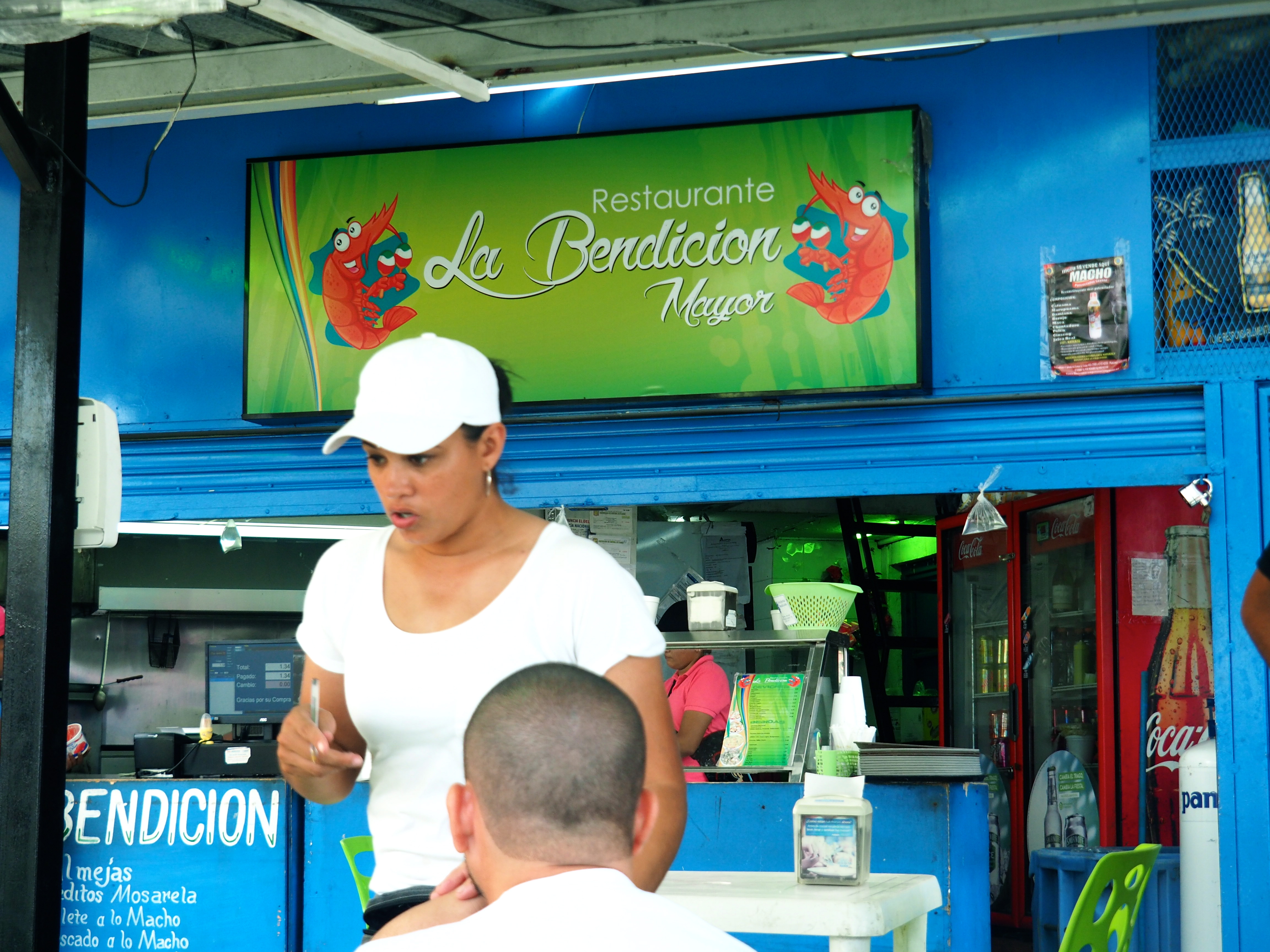
We got two cups of ceviche to share – one was a mixed Mediterranean version with olives, and the other was the more traditional style with the delectable flavours of chilli, lime and coriander. YUMMMMMM!
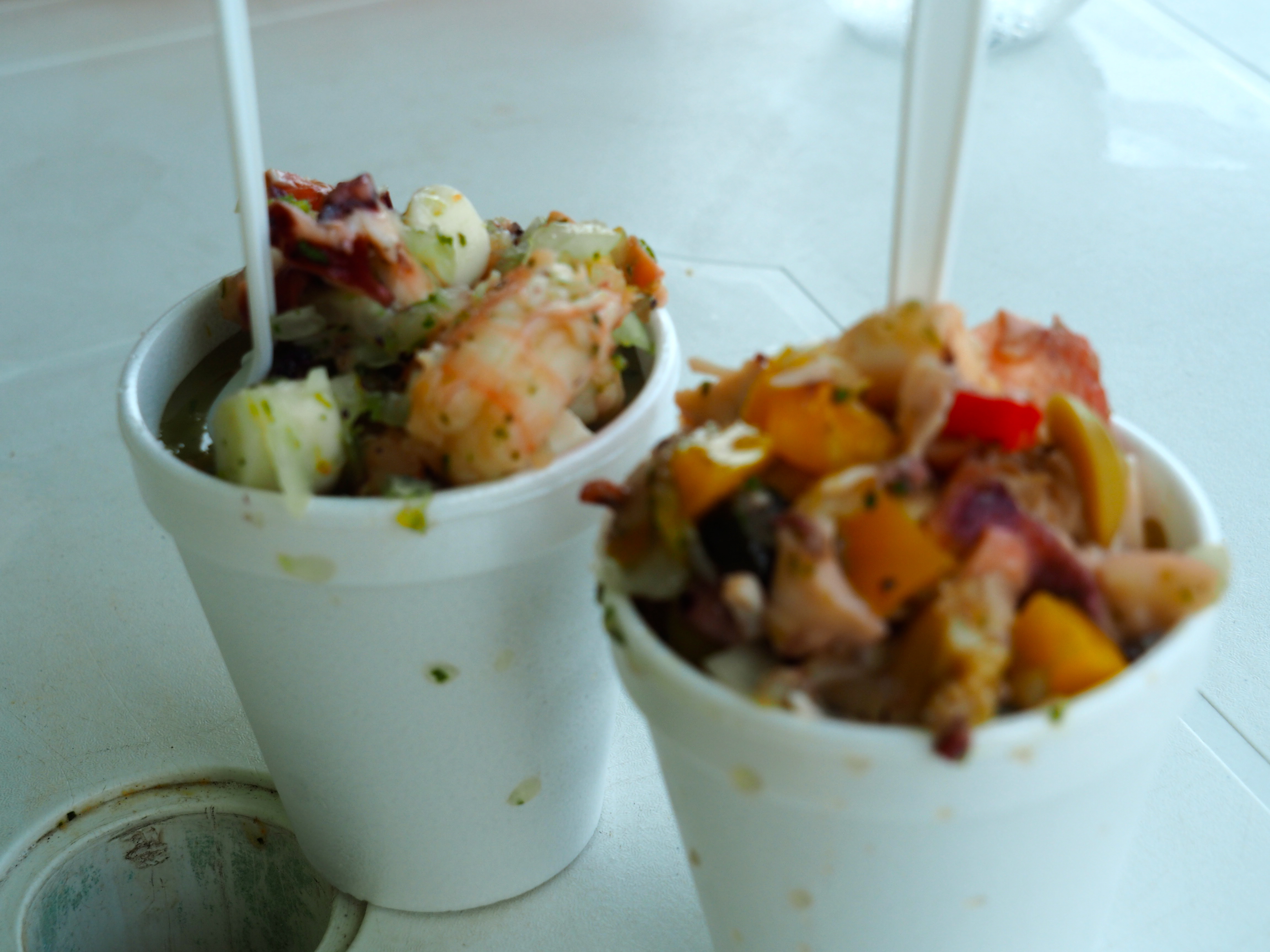
The ceviche was so fresh and juicy and the servings were HUGE for what we paid, which was about US$2 a cup! As a comparison, in Australia that much ceviche would probably sell for about $30, although to be fair, there isn’t really a fish market equivalent to buy ceviche, it’s really only in the high end restaurants.
After the fish market, we said goodbye to Joey and headed back to our hotel to get ready for a fancy pants degustation dinner at one of Panama City’s rising stars in the dining world – Donde Jose. Our dinner experience at this hot spot most certainly deserves its own blog entry, and that will be coming up in the next few days, so stay tuned!
Panama Canal
Of course, one cannot visit Panama City and not visit the Miraflores Locks to see the world-famous Panama Canal in action. And that was exactly what we did on our second 9and last!) full day in Panama City. It is obviously not located in the city area so we caught an Uber out there for about US$5 (compared to the taxis who charge about US$20 for the same trip!).
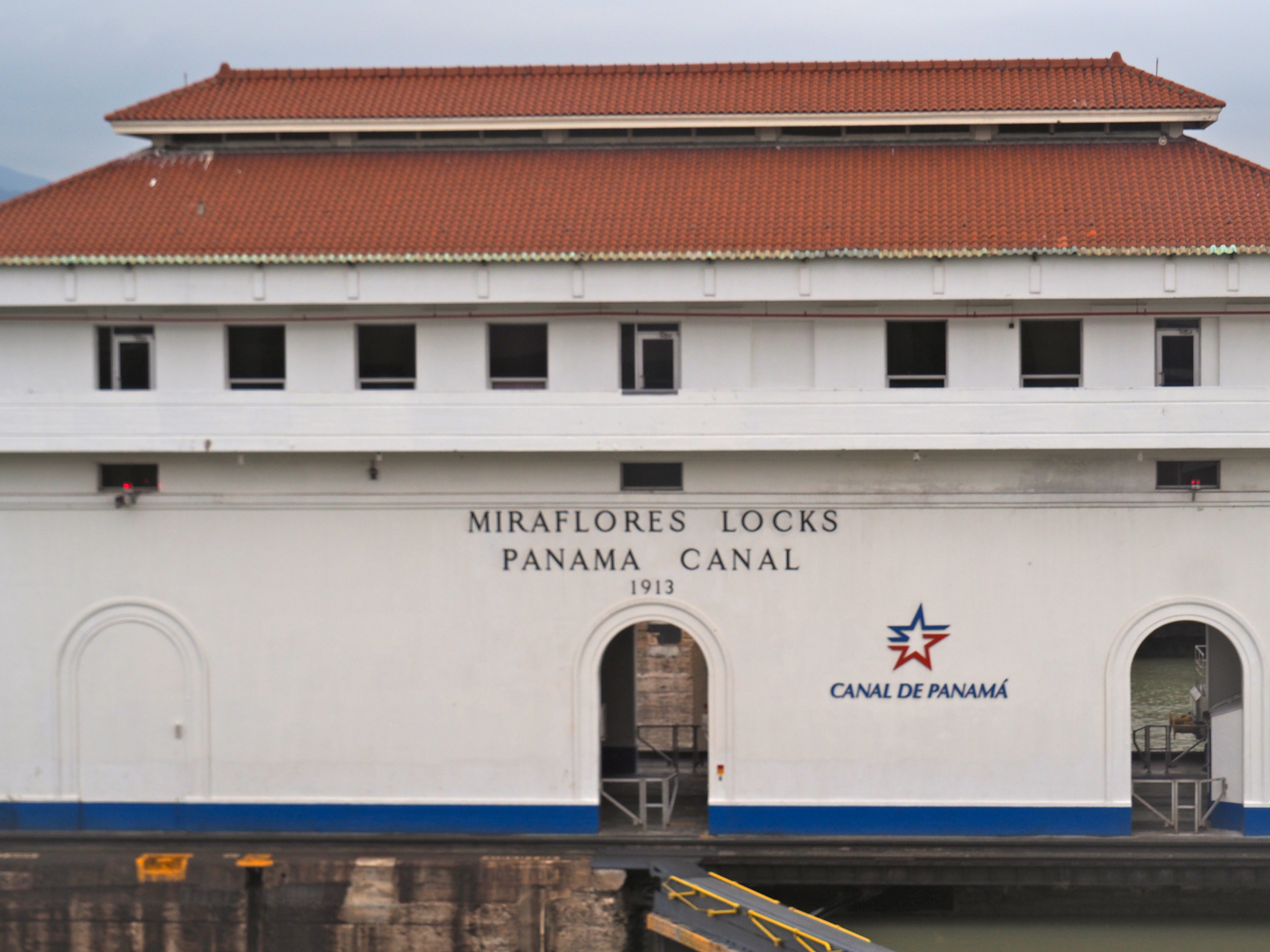
The US$15 per person entry fee included access to the Canal Museum as well as the expansive four storey high viewing platform where you could see firsthand the huge Panamanian size ships entering and exiting the locks on their journey from one side of the continent to the other.
Everyone knows the Panama Canal is a feat of engineering and I even think it is one of the seven wonders of the modern world, but seeing it up close and personal was … weird. I am not sure what I was expecting, but seeing the two-lane channels in front of us, and even with a ship in the Canal, seemed kind of underwhelming.
The Panama Canal
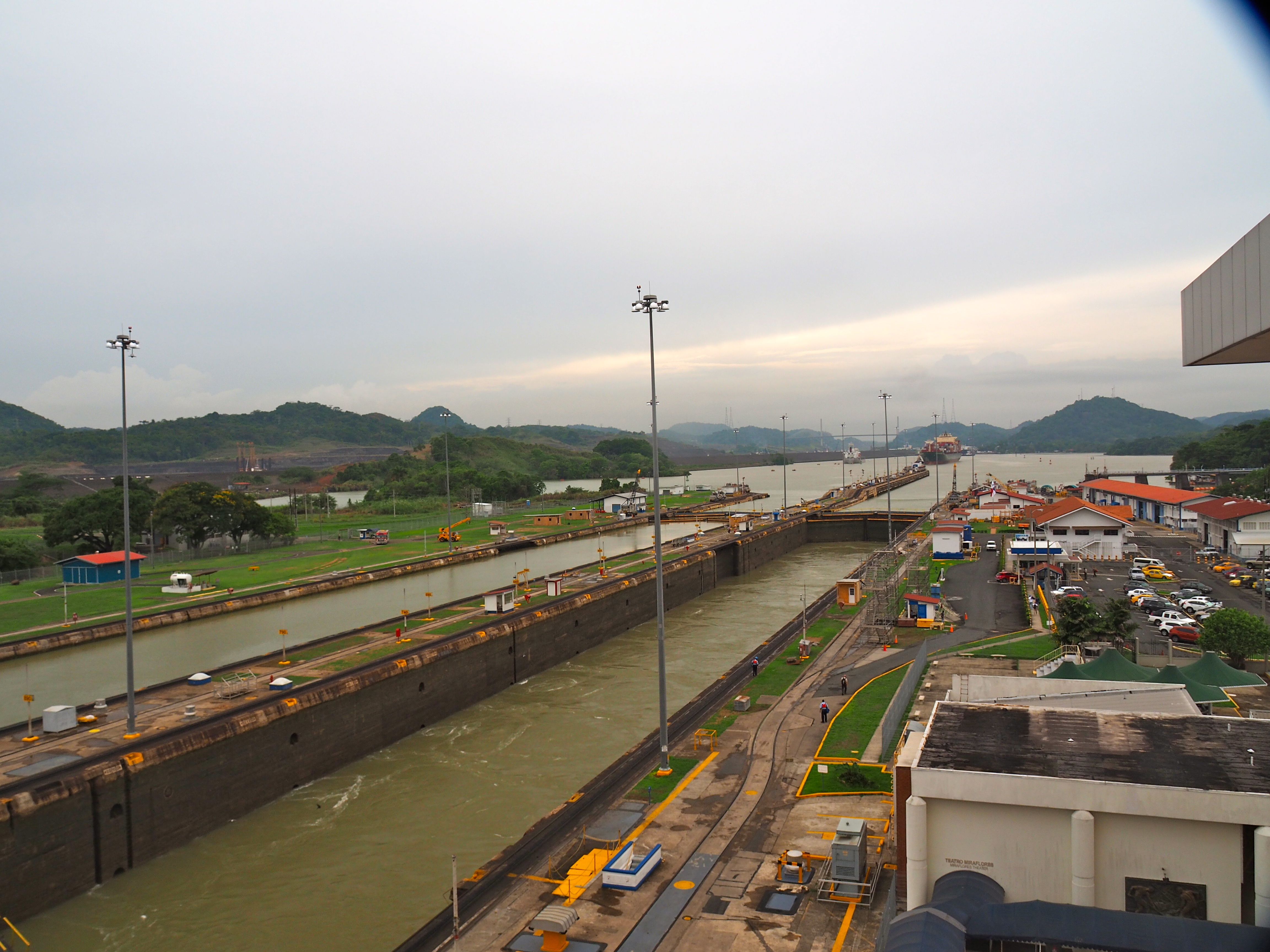
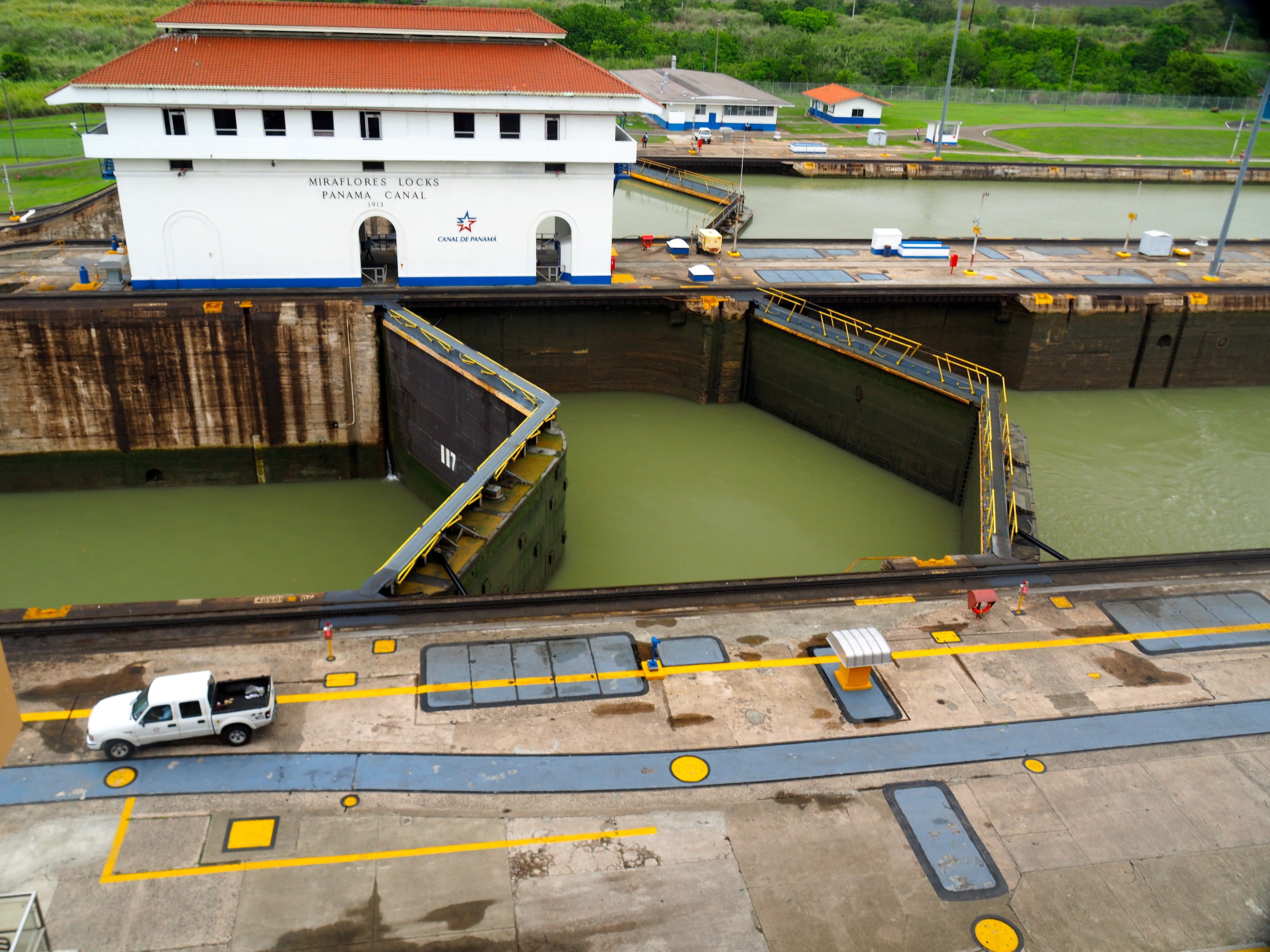
VIDEO —> Canal Clip. This is a quick video showing the below ship dropping down as it goes from the higher lock on the right, to the lower one on the left (shown as a big drop to the left hand side of the wall).
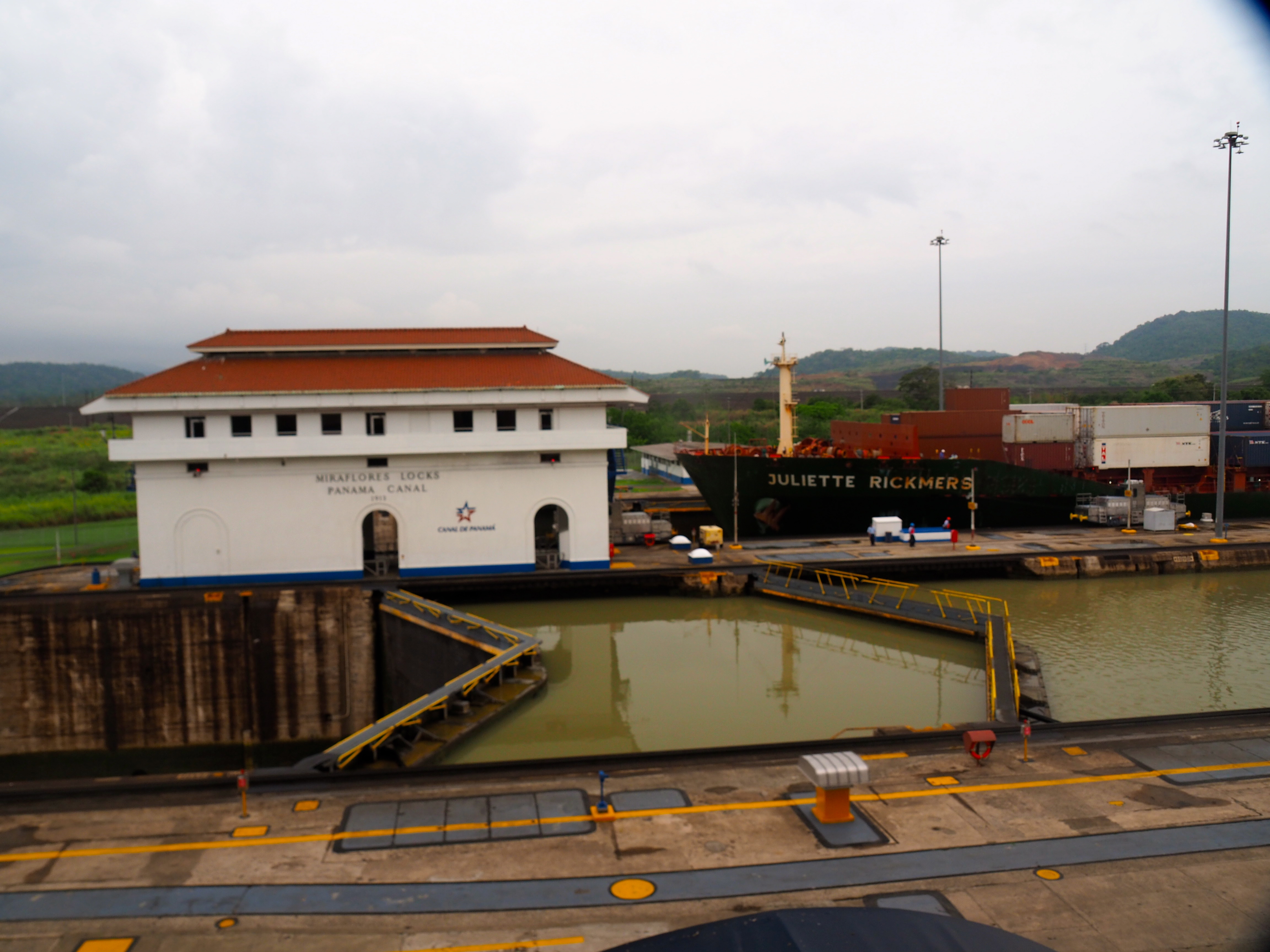
Sure, the boats were MASSIVE and the fact a complex channel was constructed 100 years ago is impressive, but I was not as blown away by the Miraflores Locks as I was expecting to be. Maybe it has something to do with the fact that whilst in France on our honeymoon a couple of years ago, Dave and I actually steered (Drove? Commandeered?) our yacht/boat through the famous Beziers Locks on the Canal du Midi.
The Beziers Locks included a seven-level lock system over a 25 metre height difference (compared to the three lock system and 16 metres difference of the Panama Canal) and the Canal du Midi is targeted at much smaller barges and tourist traffic, however, it seemed to me, MUCH more impressive than the Miraflores Locks.
Having said all of the above, there is nothing unimpressive about how the Panama Canal came to exist, and of the engineering prowess involved in bringing the vision to fruition.
Map of the Panama Canal

Thousands of lives were devoted to constructing the man-made 77 kilometre kilometres long channel over the ten years between 1904-1914, and unfortunately hundreds lost their lives as a result. Mosquito born diseases, such as yellow fever and malaria, proved fatal to the many recent immigrant workers on the canal and public health measures were ineffective as the carrier effect of mosquitoes was not then understood.
We spent a couple of hours exploring the museum, which included watching a brief video explaining the history of the canal’s construction, and I must admit, it was at this point I felt even more guilty for thinking the Canal was not that special.
A ship passing through the Miraflores Locks on the Panama Canal. Note the difference in water height in the front v back channels.
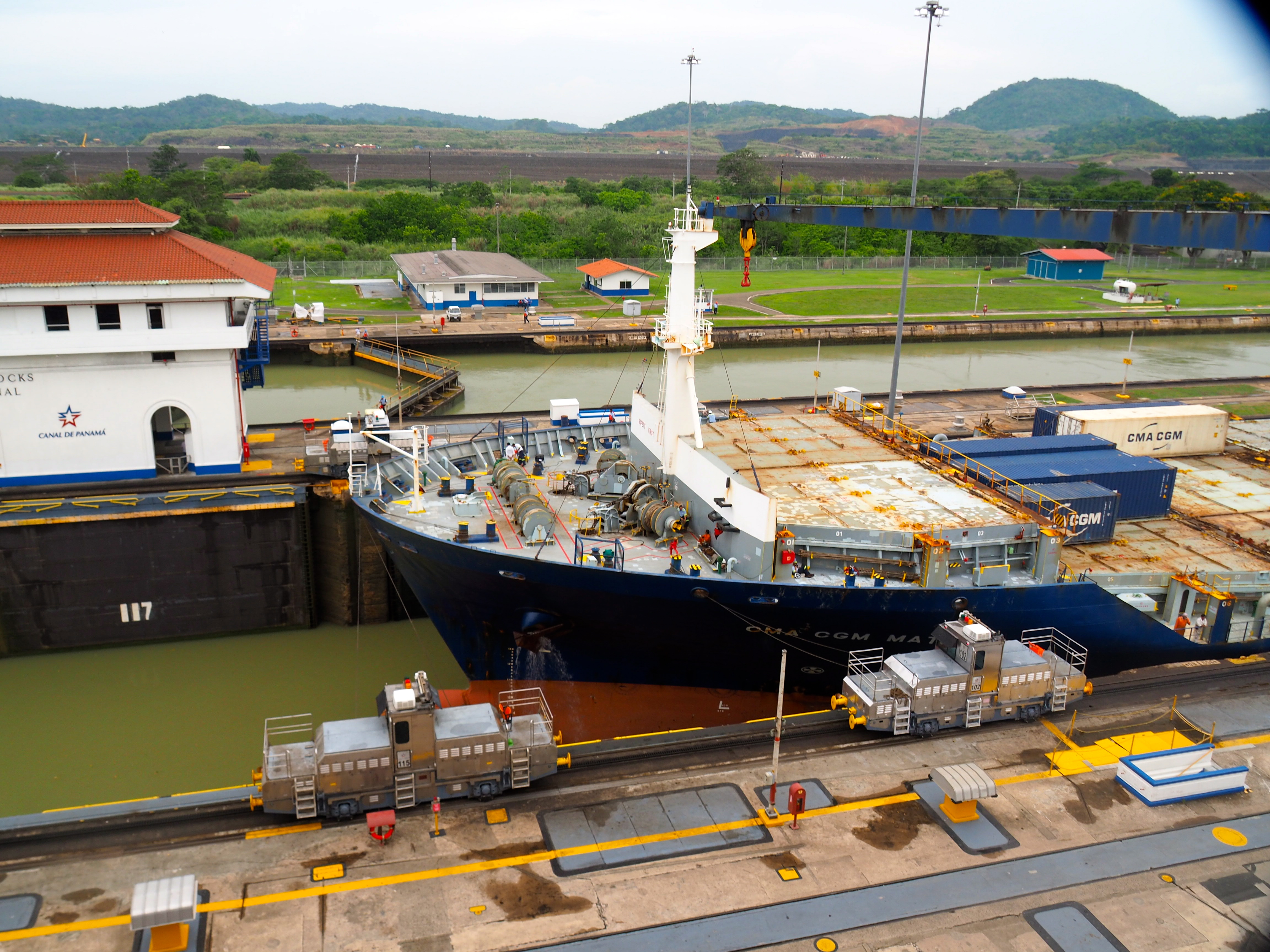
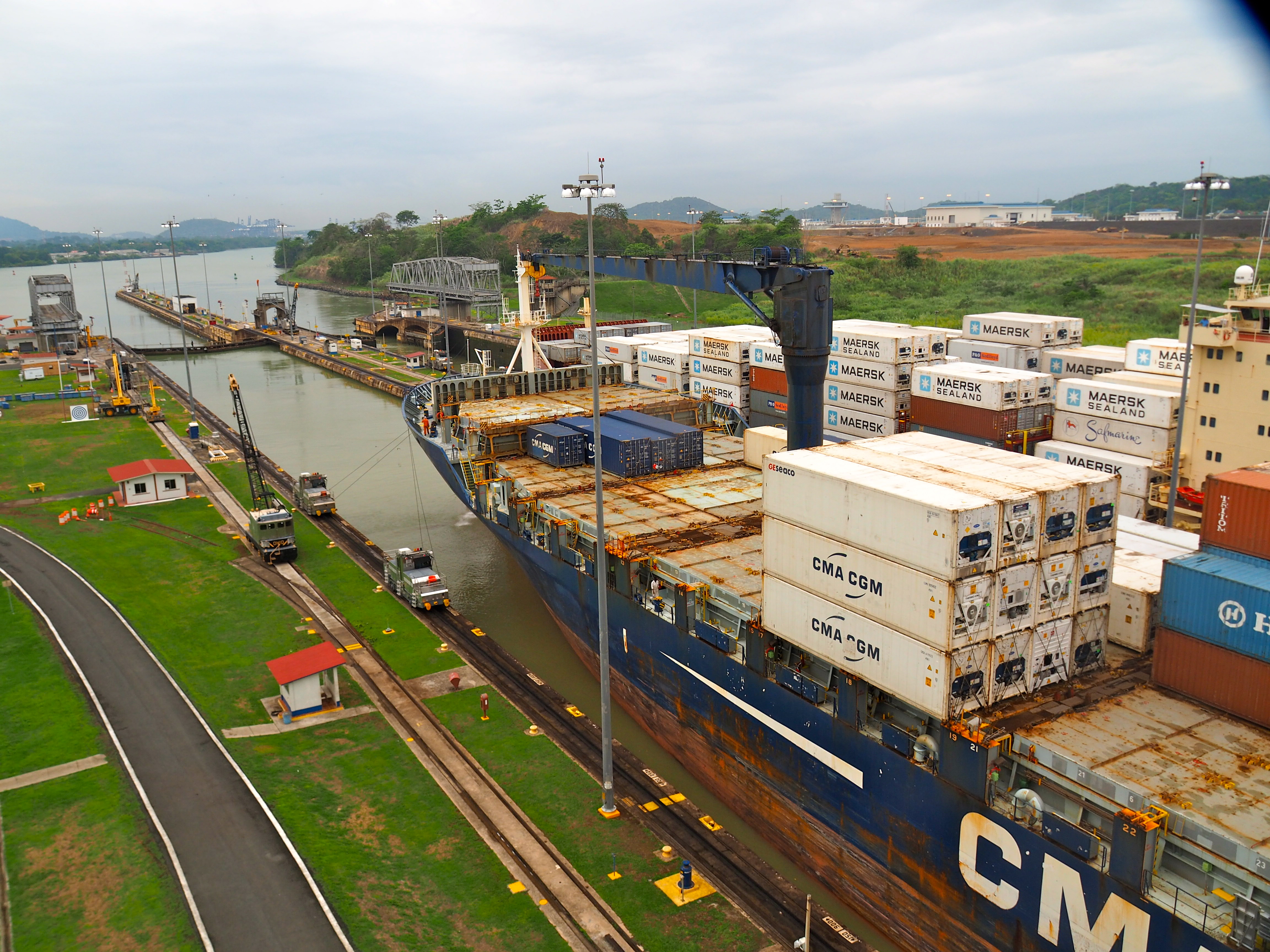
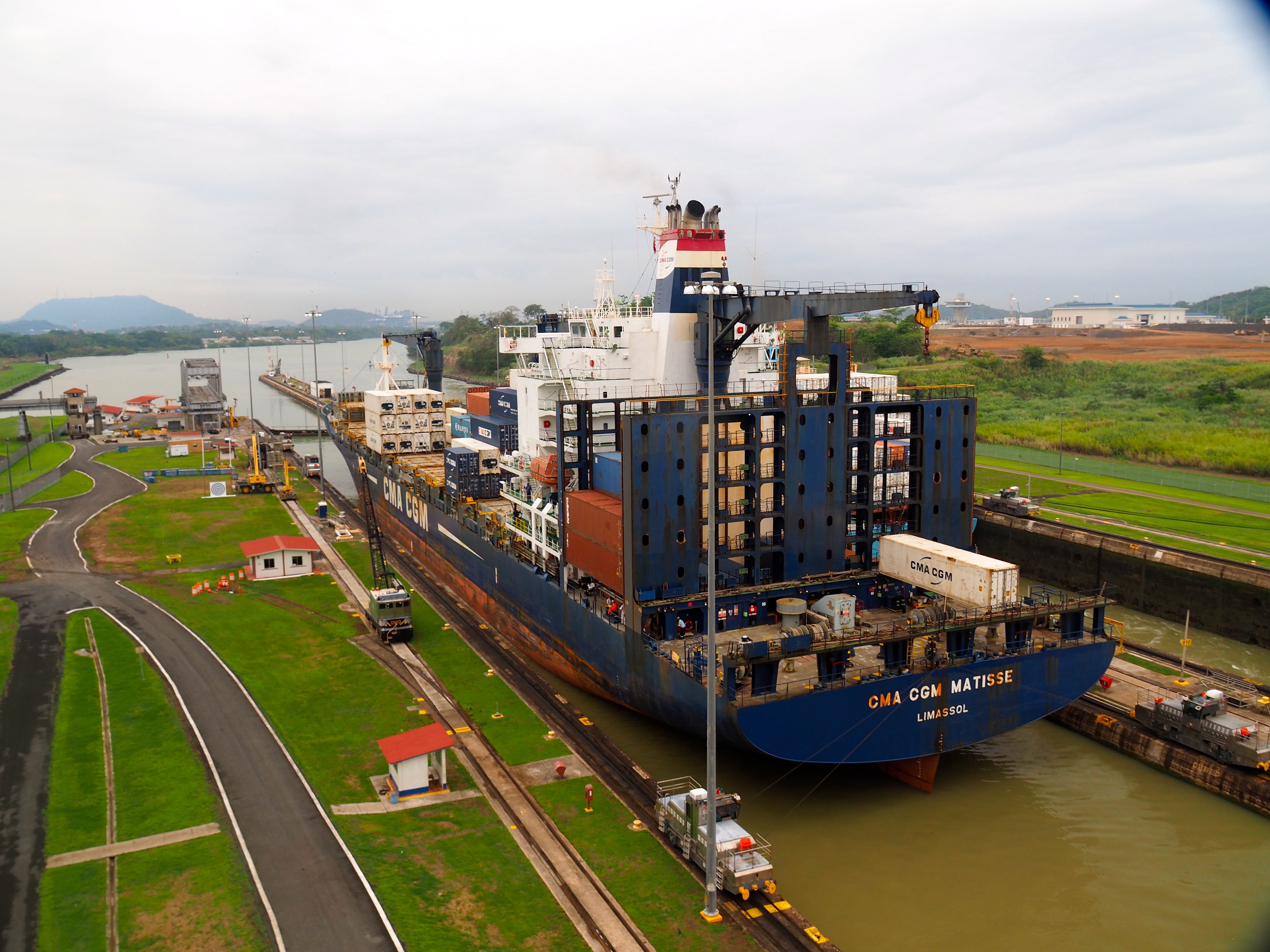
The sheer scale of the canal, and that it was built with the tools of over 100 years ago, combined with the fact that the Canal has operated every single day for the last hundred days without a major maintenance issue…?! I realise the Panama Canal may not look entirely awe inspiring but what it achieves and how long it has been achieving this, make it worthy indeed of the accolades it receives. I left feeling very humble to have witnessed it in action.
Working hard in the Panama Canal ‘control room’ (aka. museum display)

Our three nights in Panama City flew by, and we were really glad to have had the chance to explore it in more detail than originally planned. Would we have needed more time though? I don’t think so. As great as it was, I feel we saw the best of Panama City in the short time we had.
Extra Note – Accommodation
Based on Joey’s recommendations before we arrived in Panama City, we booked three nights in a dorm room at a boutique hostel/hotel, Magnolia Inn, located smack back in the ‘old town’ or Casco Viejo area of the city. Similarly to the rest of Central America, this part of town was a maze of windy little one-way cobblestone streets and had a quaint, recently gentrified feel with renovated terrace homes and lots of colour.
We definitely prefer to stay in private rooms however in Panama City, these were four, almost five times, the cost of the four person dorms at Magnolia. Plus the photos and reviews of Magnolia looked fantastic and the reviews were top notch as well.
We enjoyed a ‘supermarket special’ one of the nights in the communal dining room which was a chilled (and cheap!) way to do dinner. For those of you not in the know, a supermarket special is a delectable spread of nibbles / antipasti from the supermarket… Here I am, in all my sweaty glory in front of dinner!
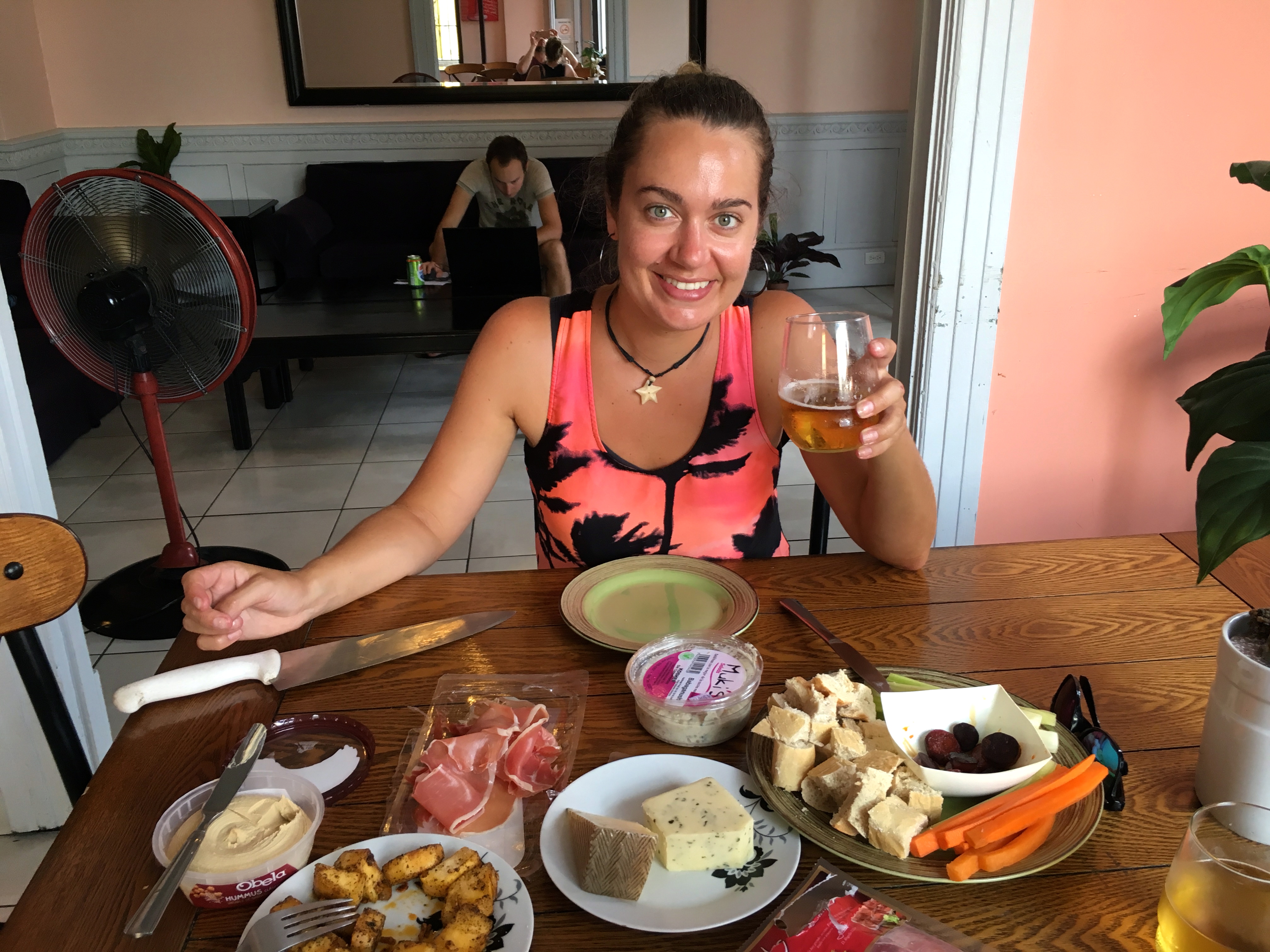
So back to our accommodation. On our first night, Dave and I actually had the dorm all to ourselves and thought maybe we had jagged it and would have it to ourselves the whole time… this was not to be the case but was not really an issue.
The bathrooms, showers and shared kitchen / lounge facilities definitely make Magnolia Inn a place I would highly recommend to other budget-conscious travellers. We paid approximately US$15 per person per night for the air-conditioned four person dorm, which was a steal for the location and amenities.
